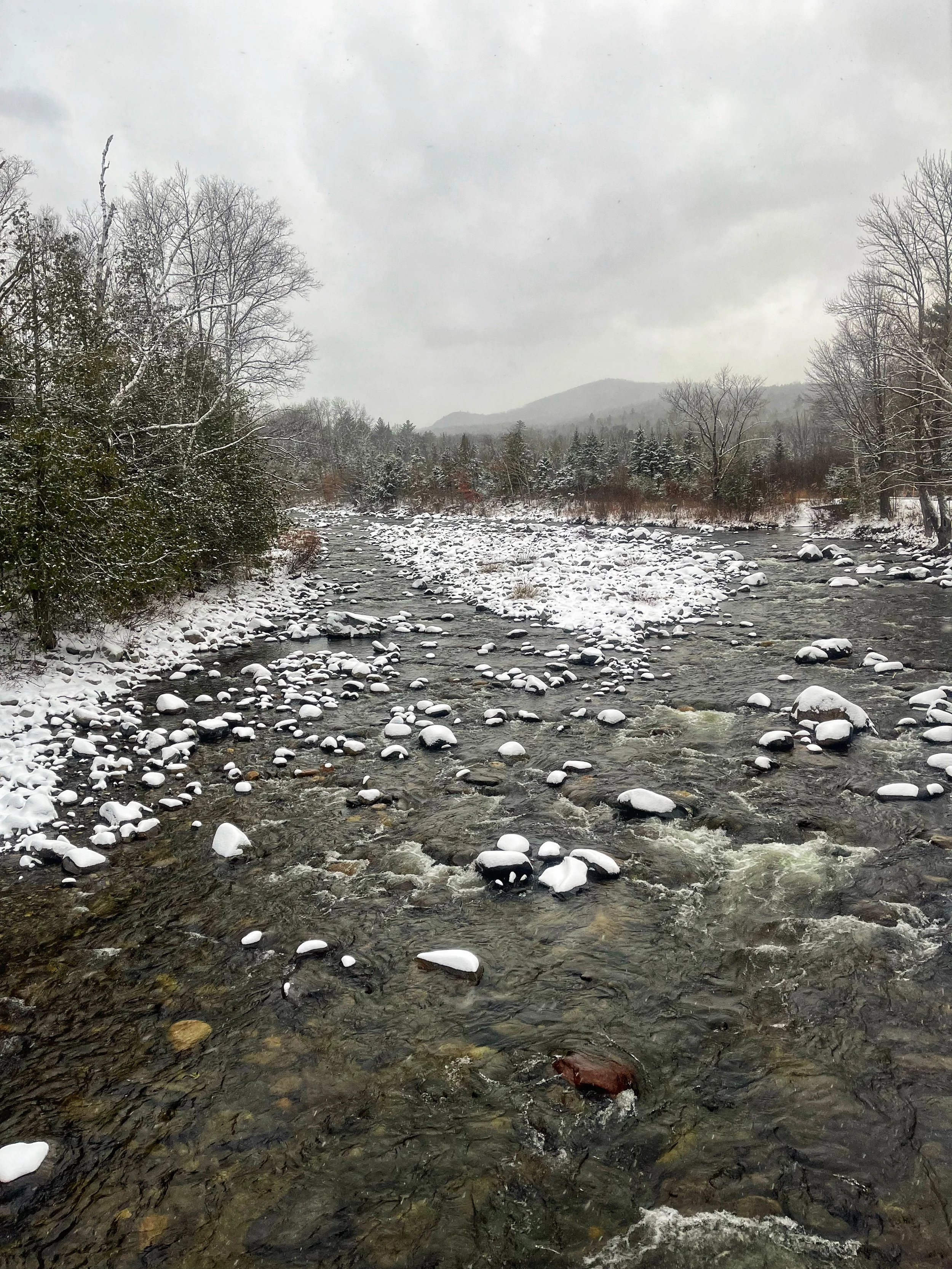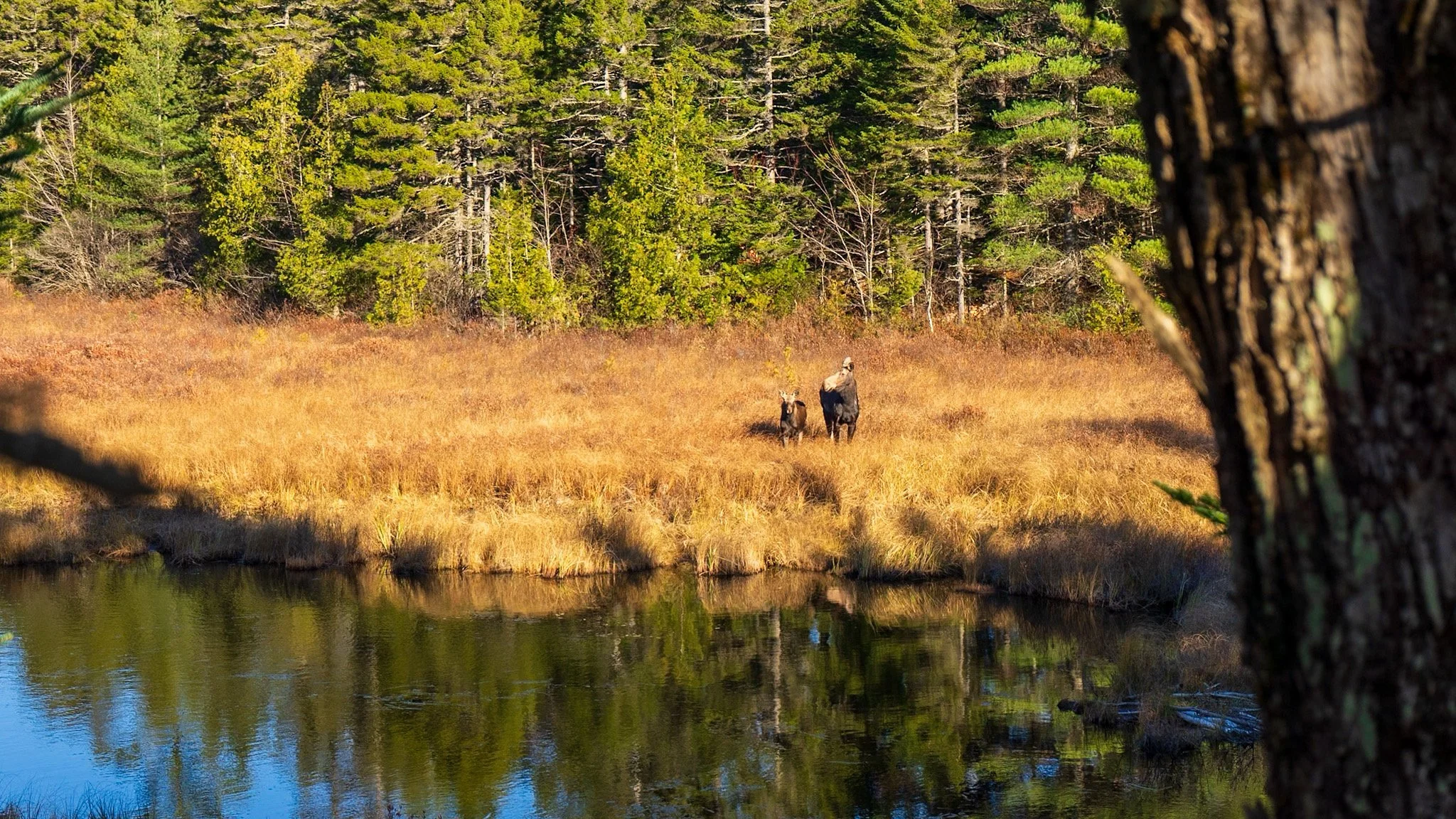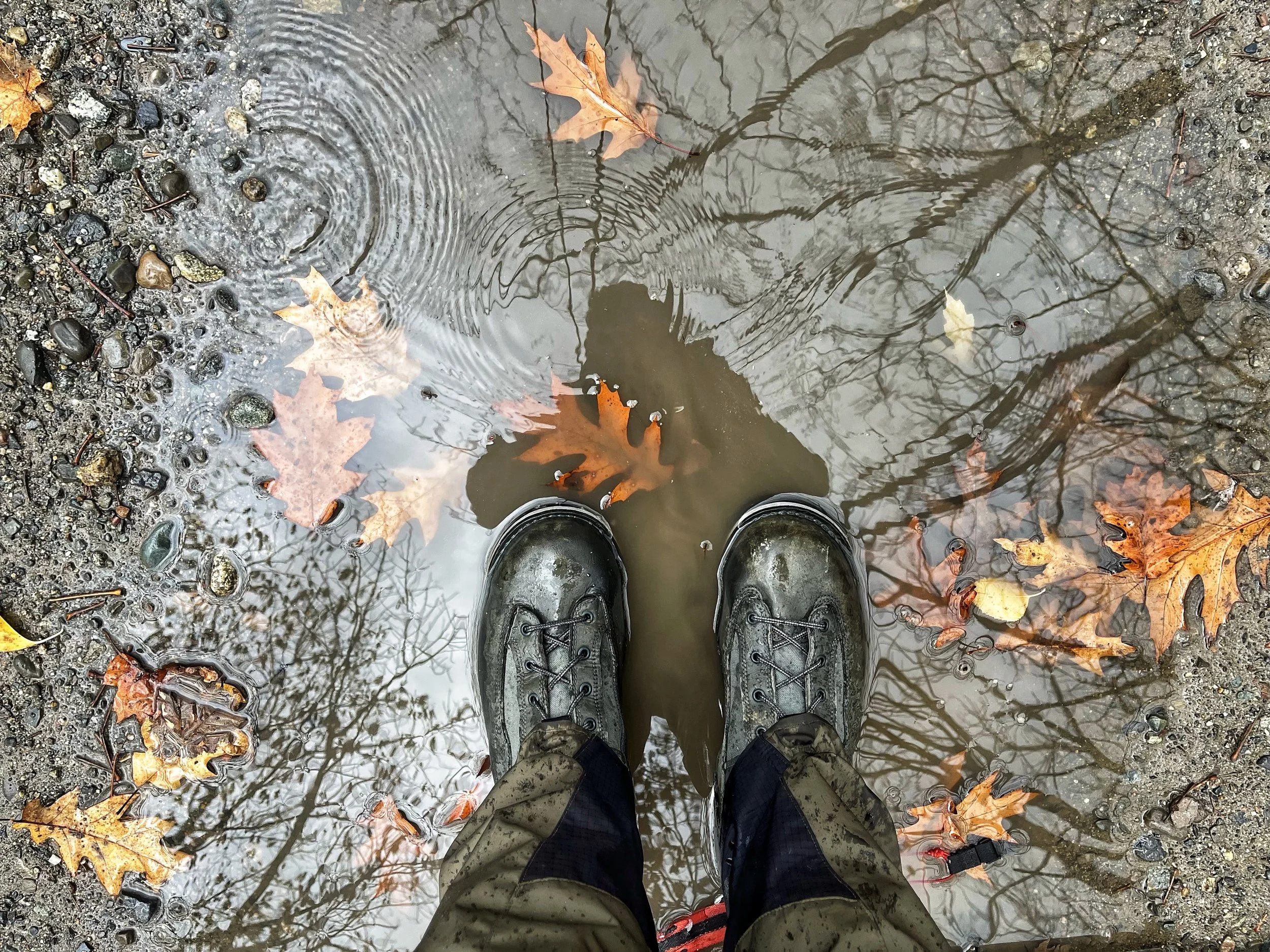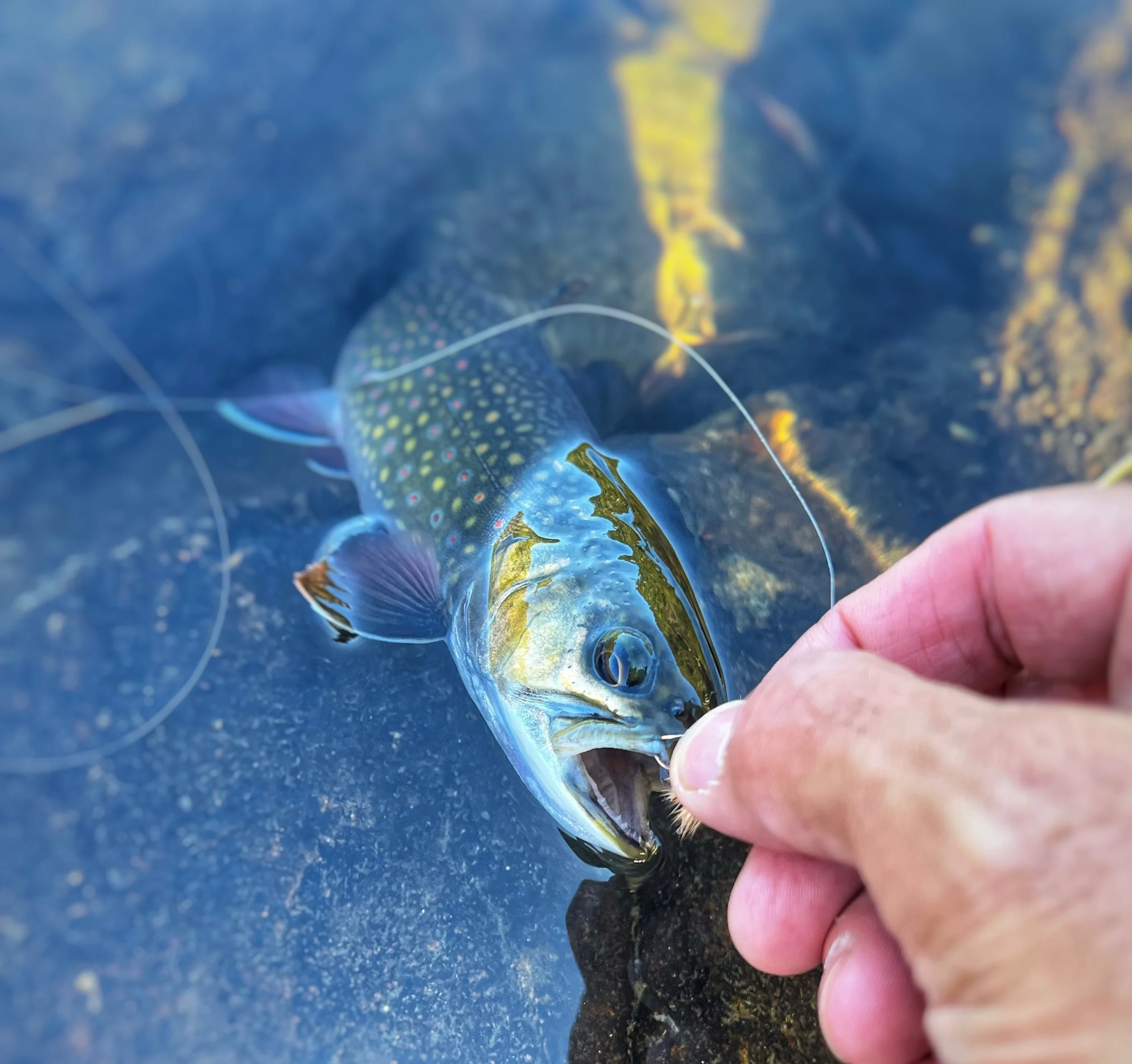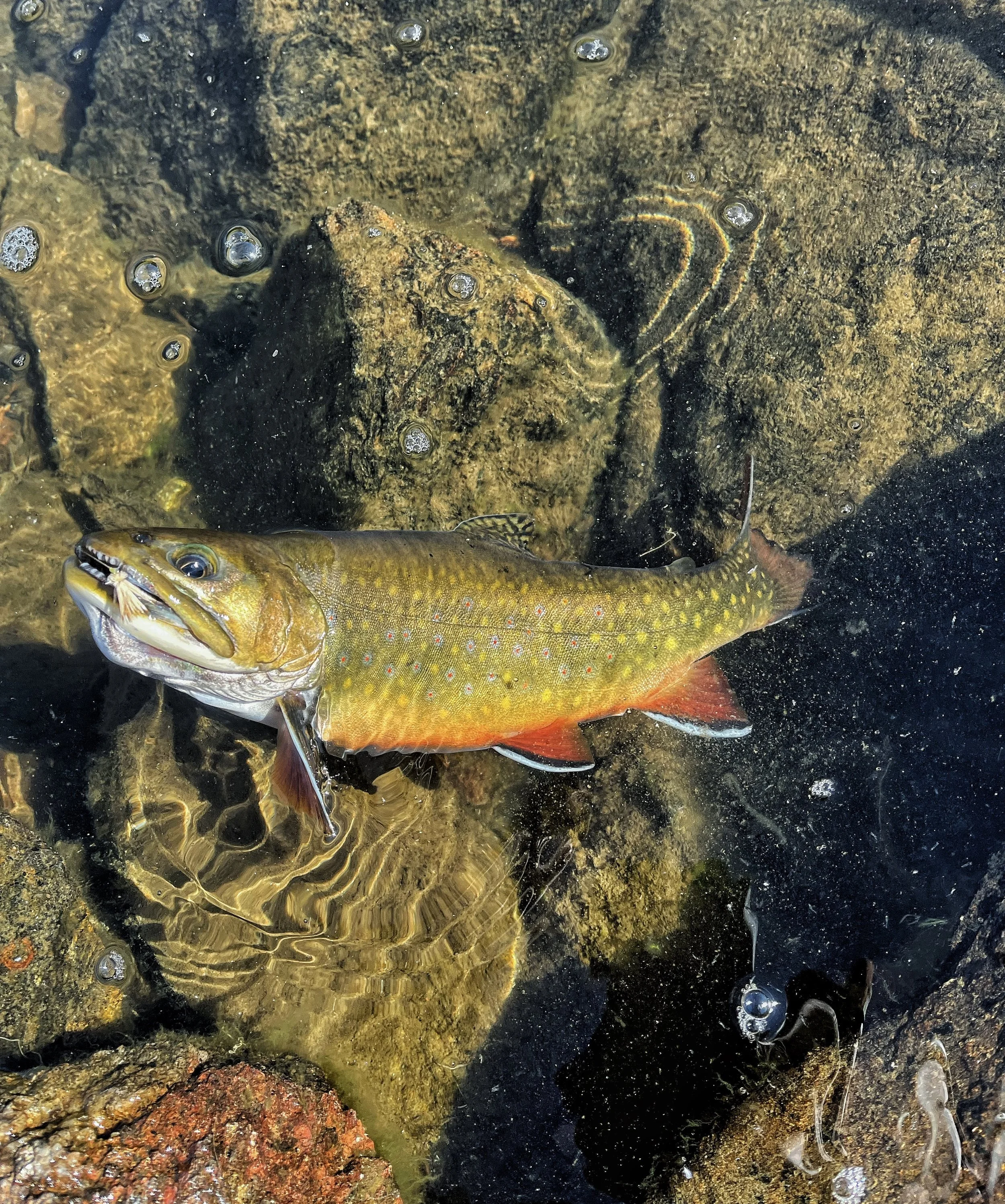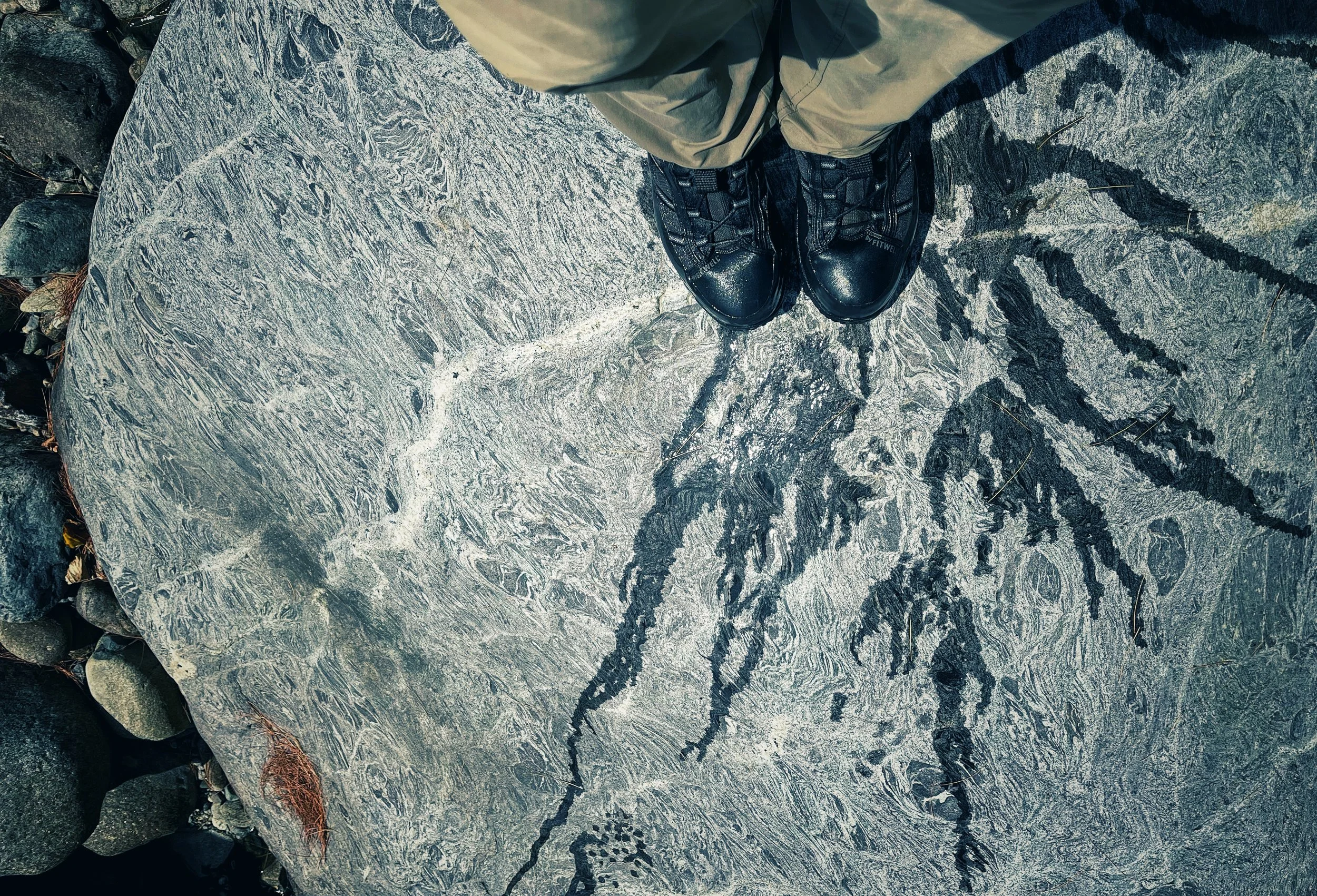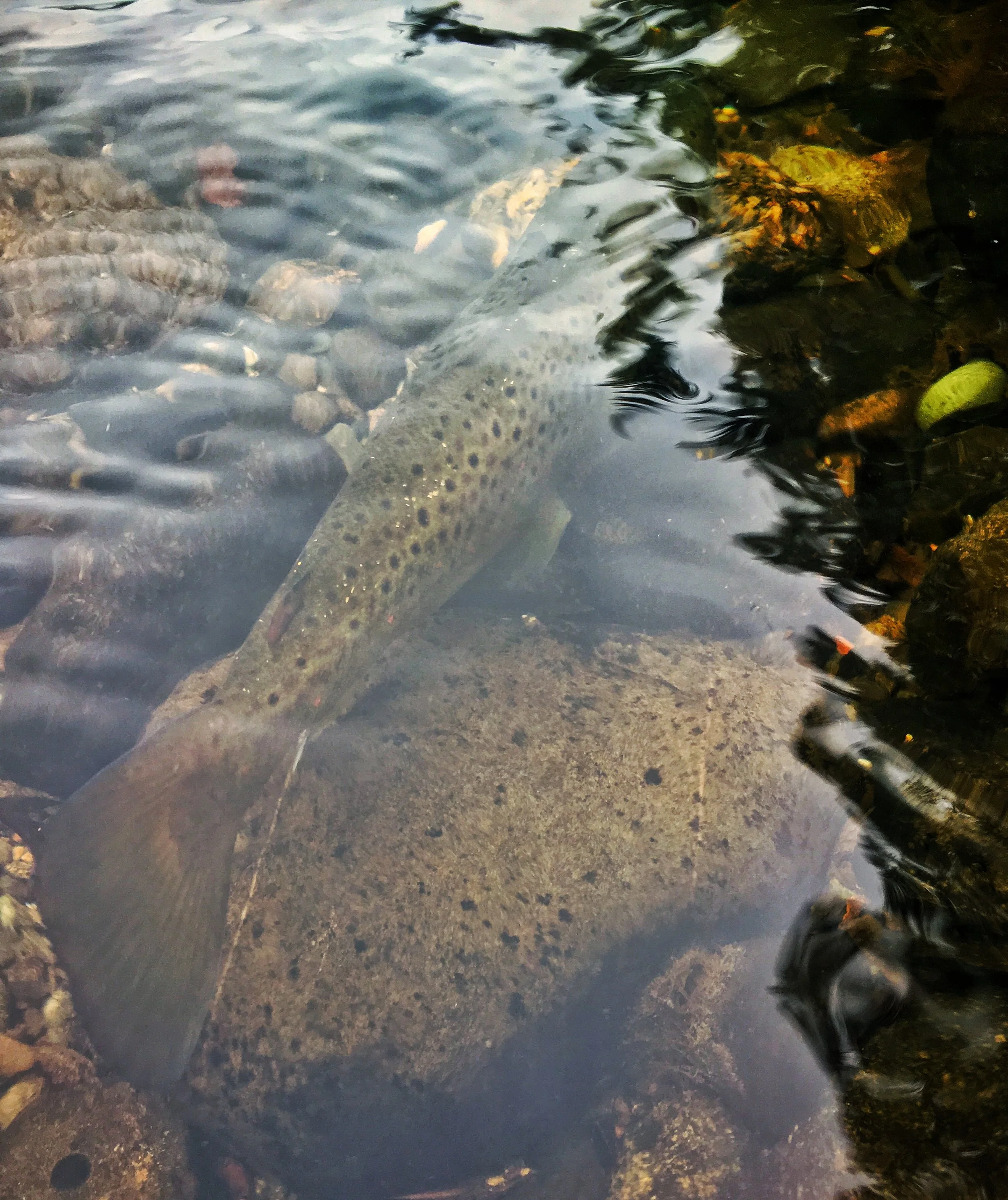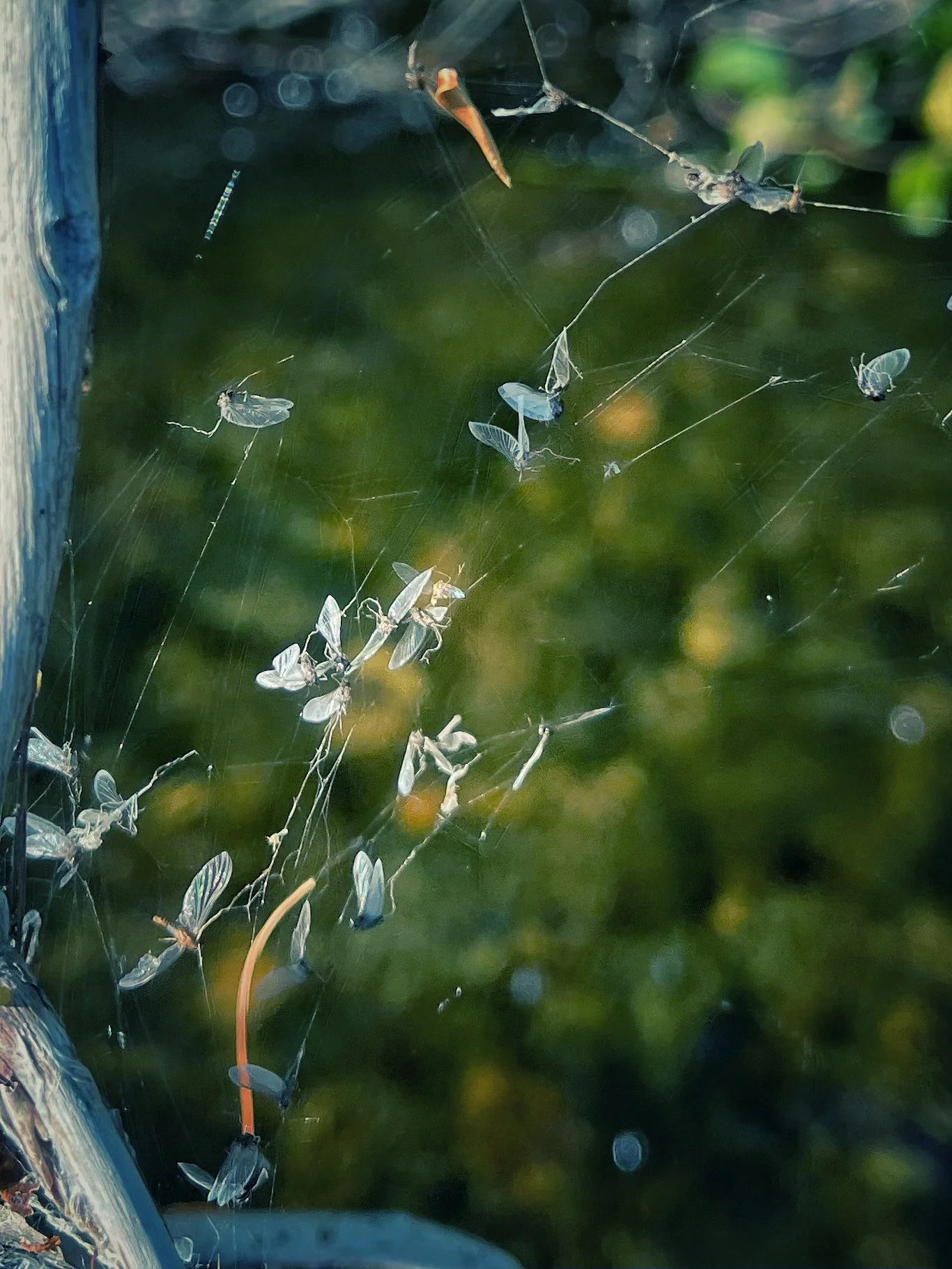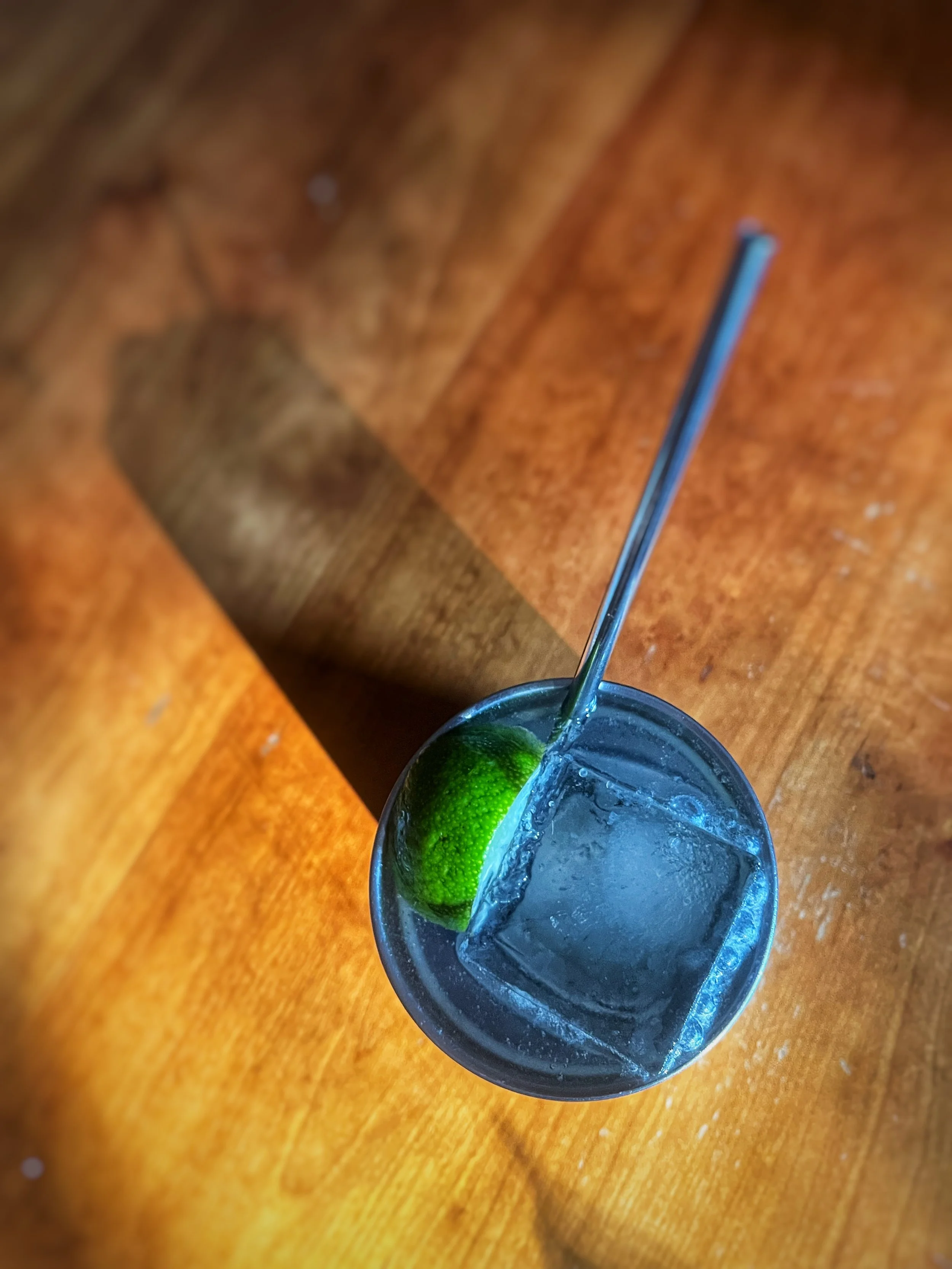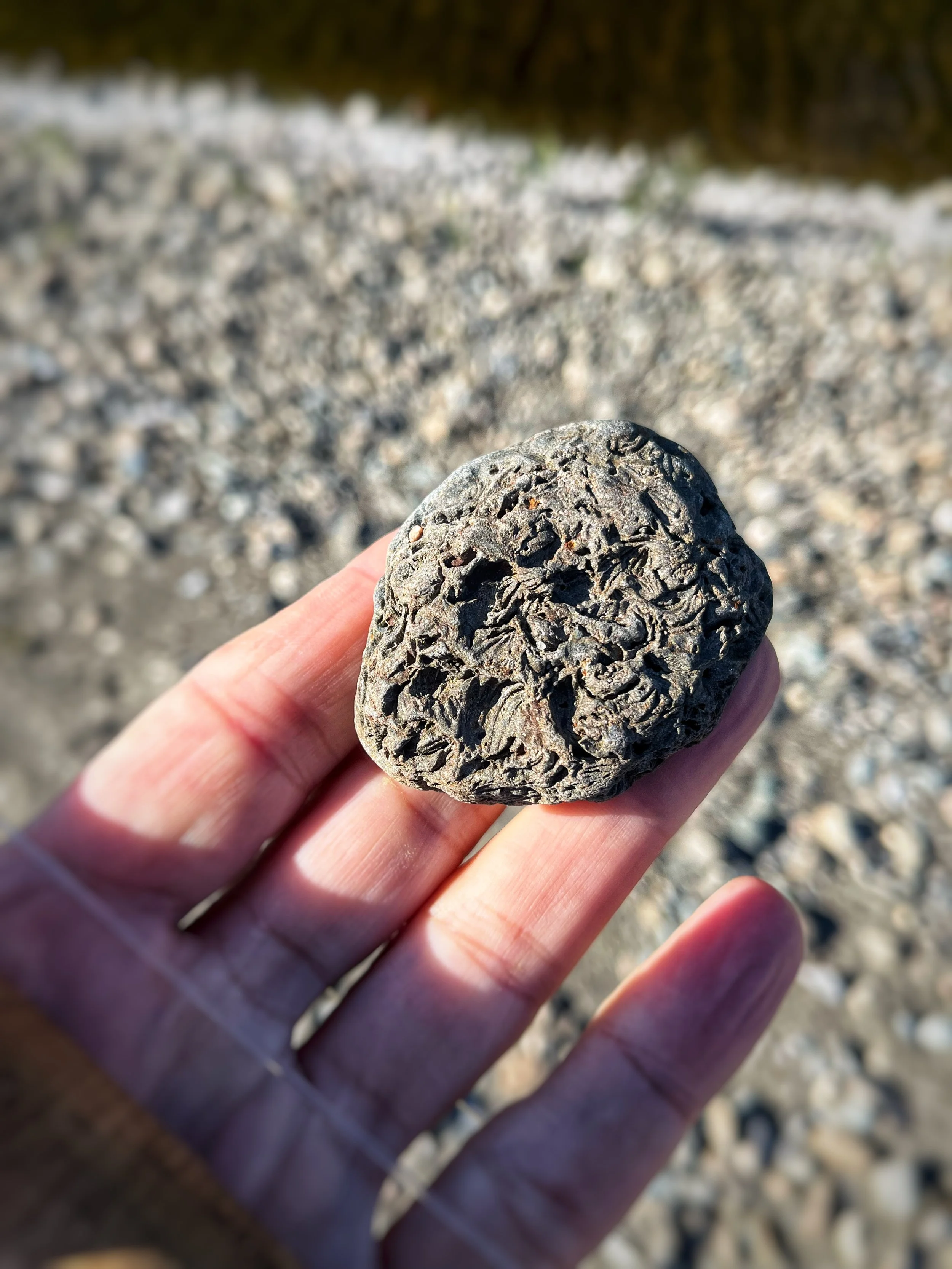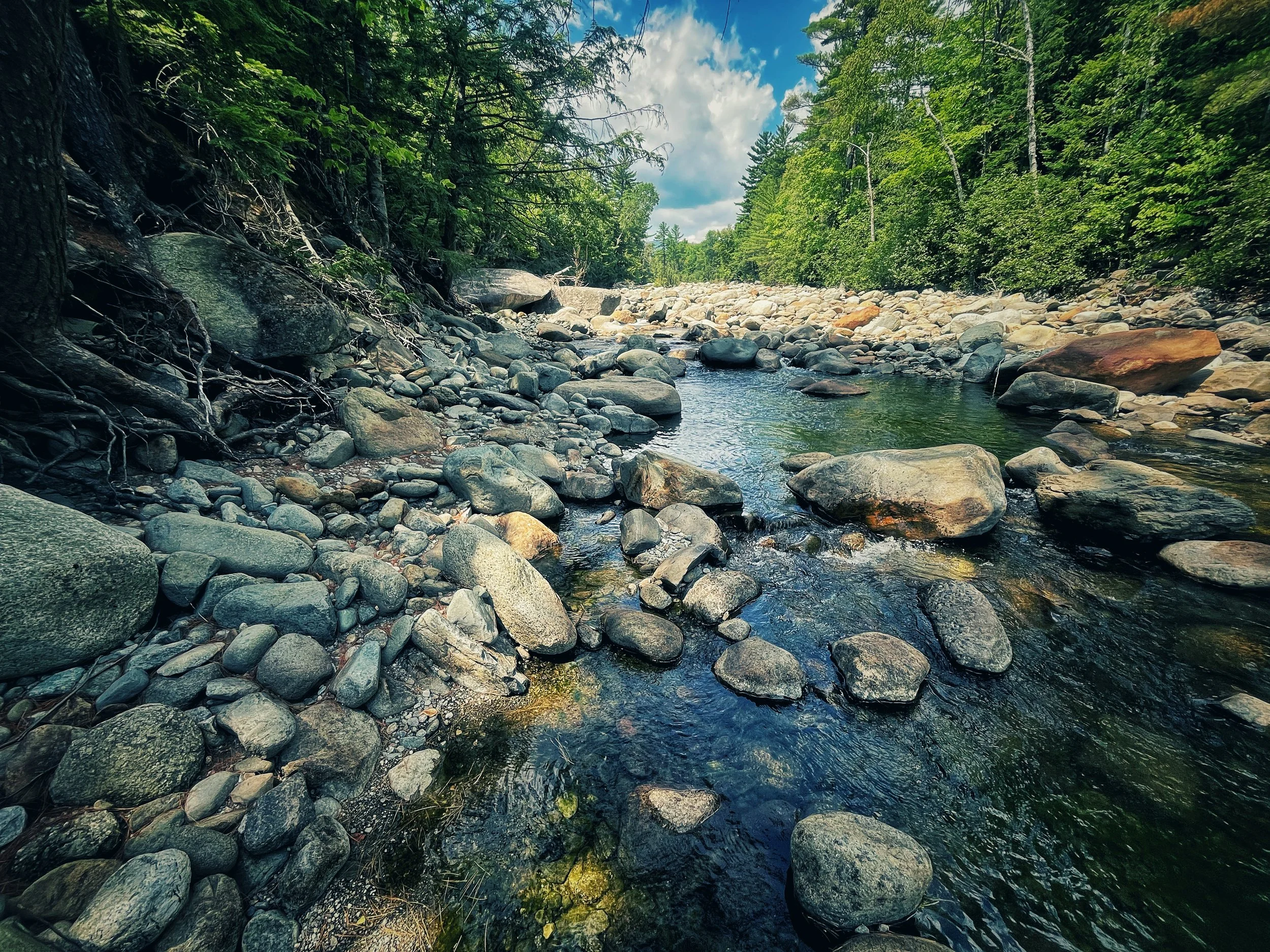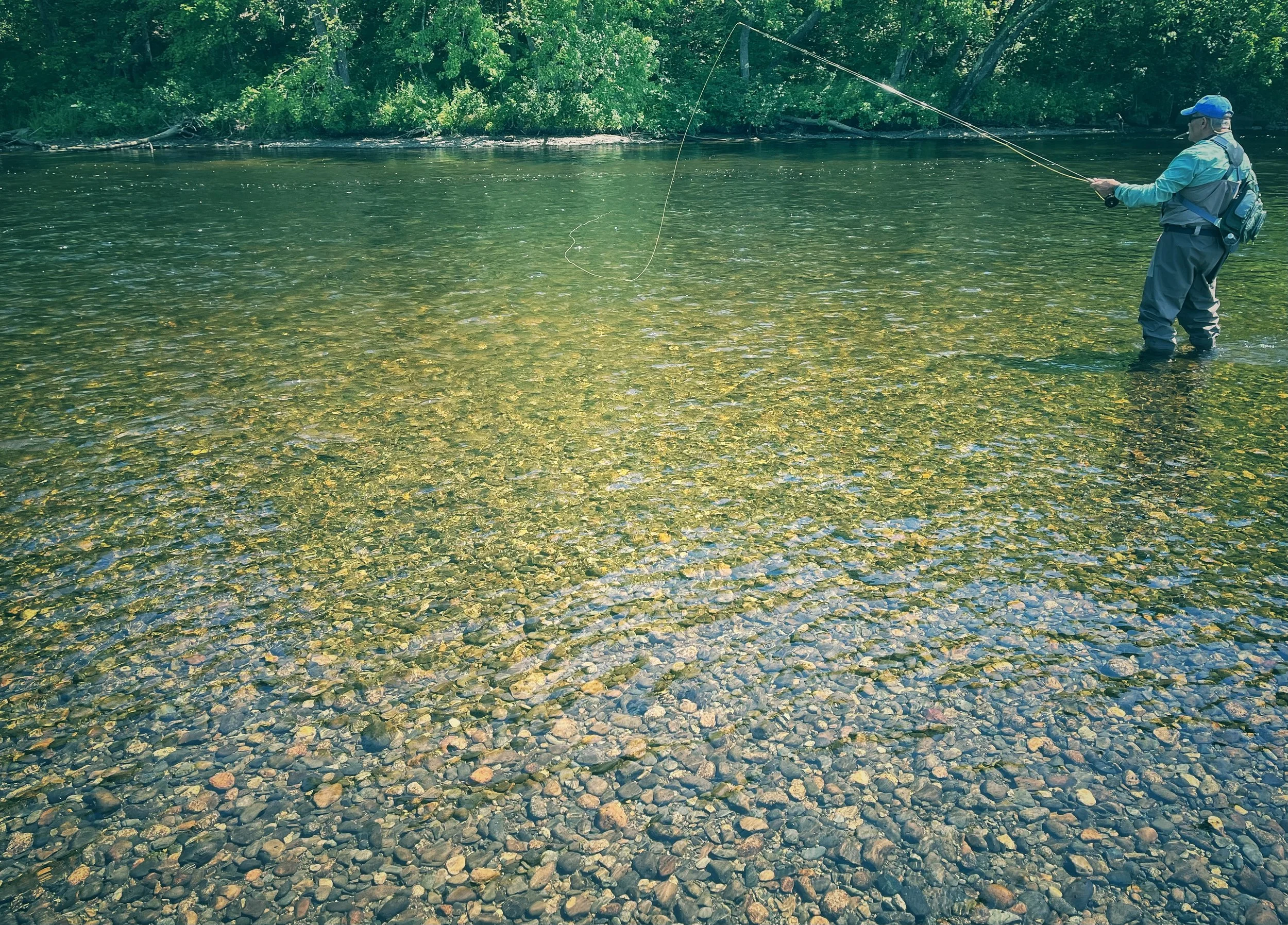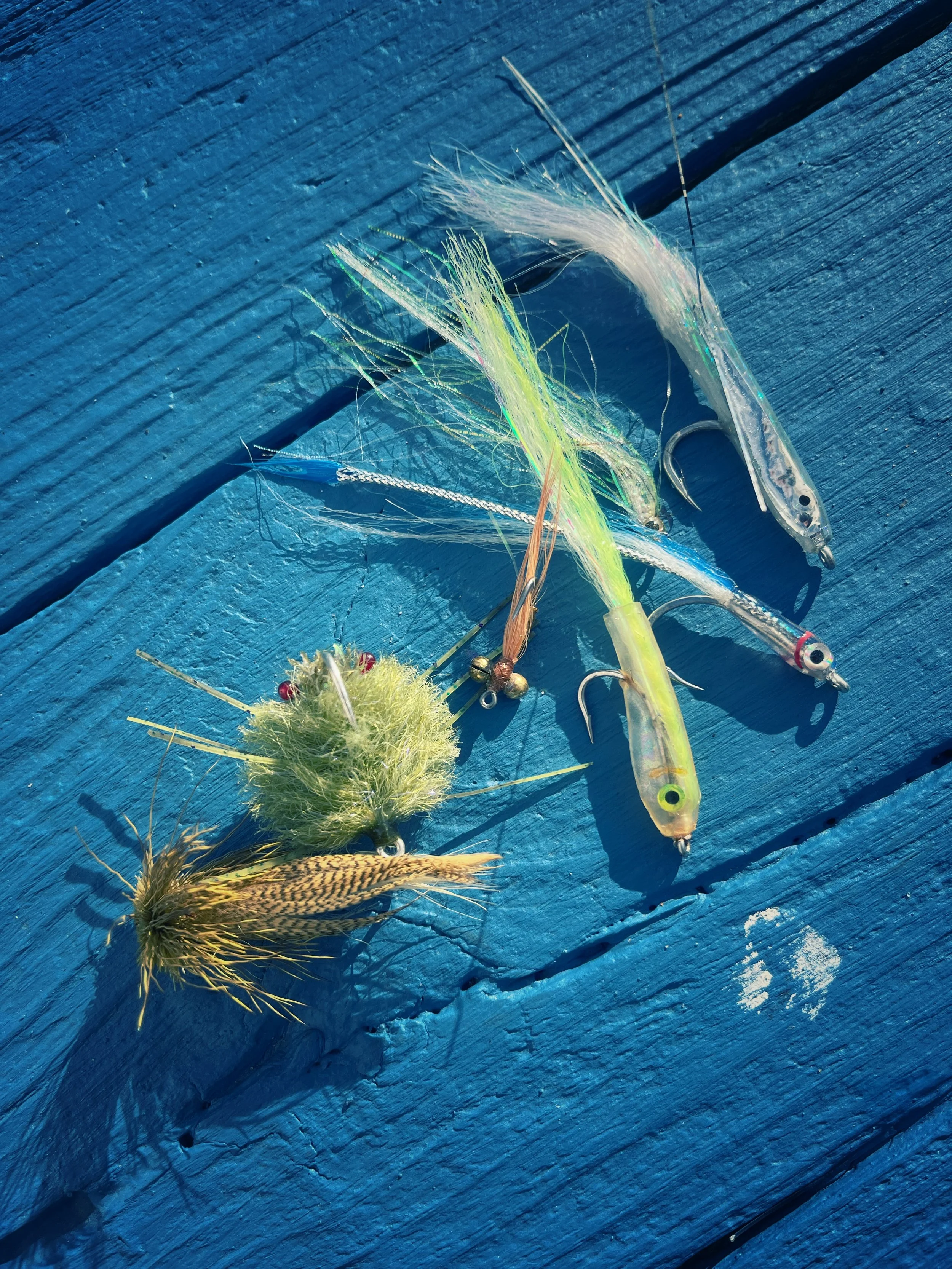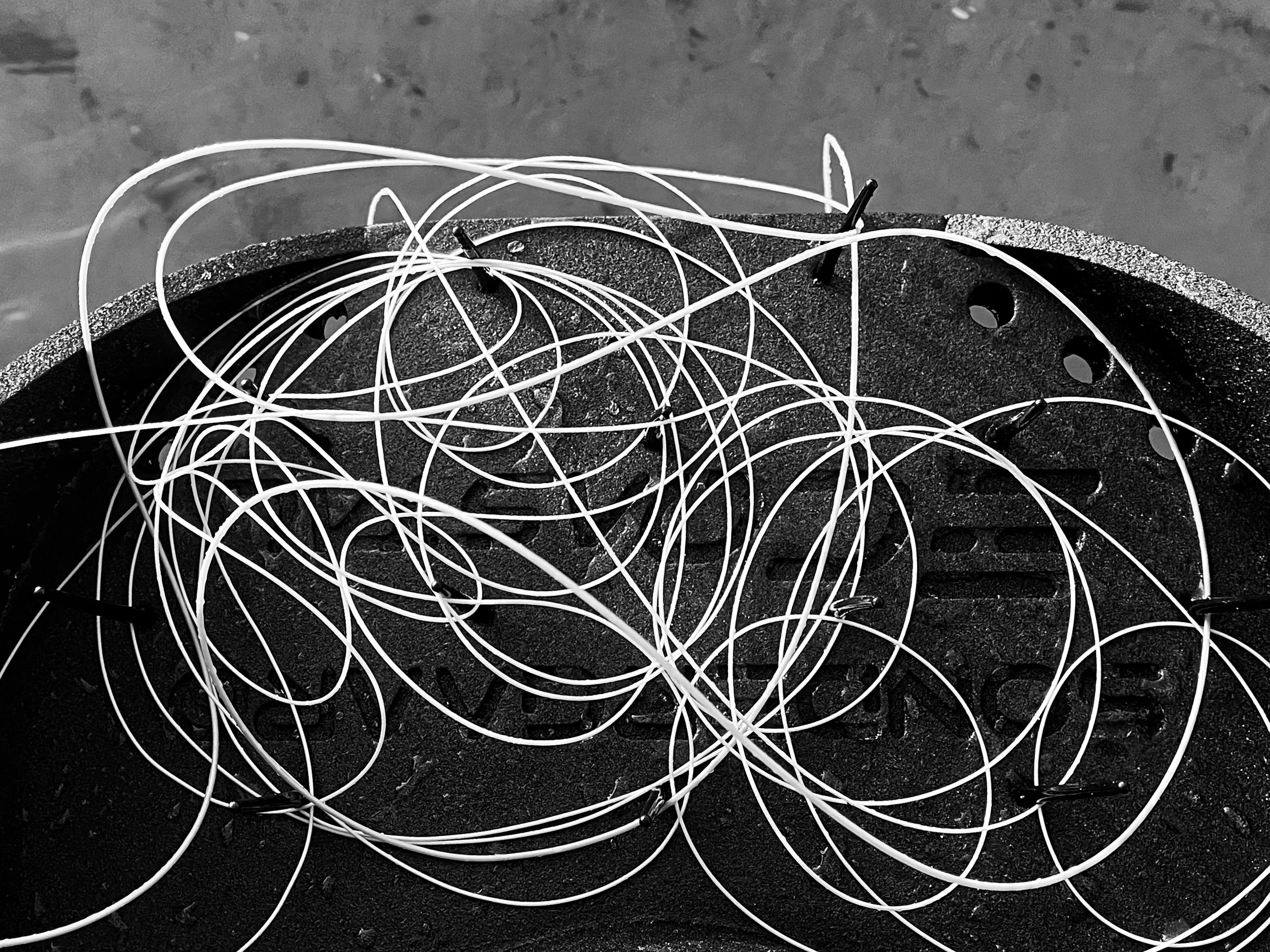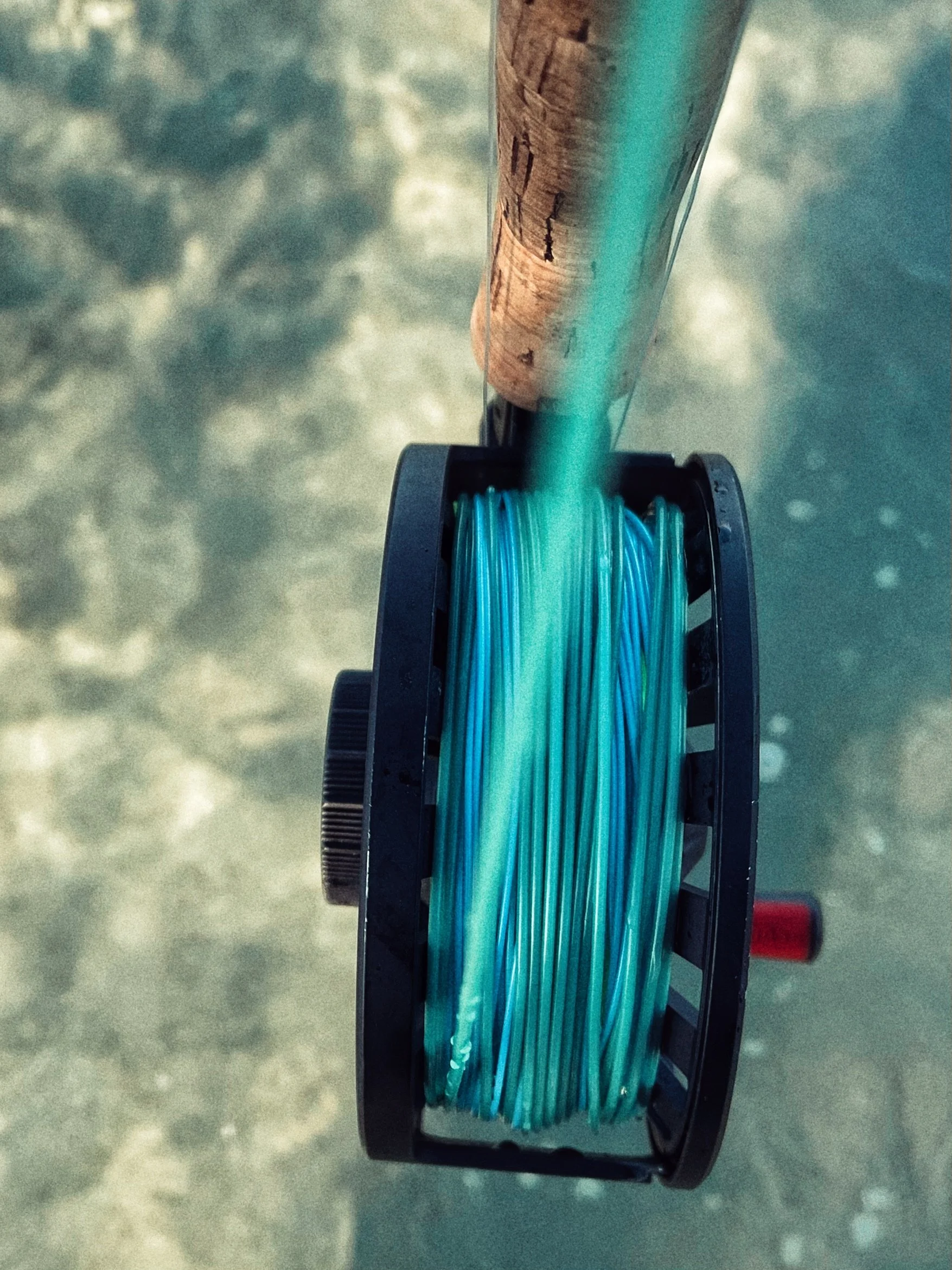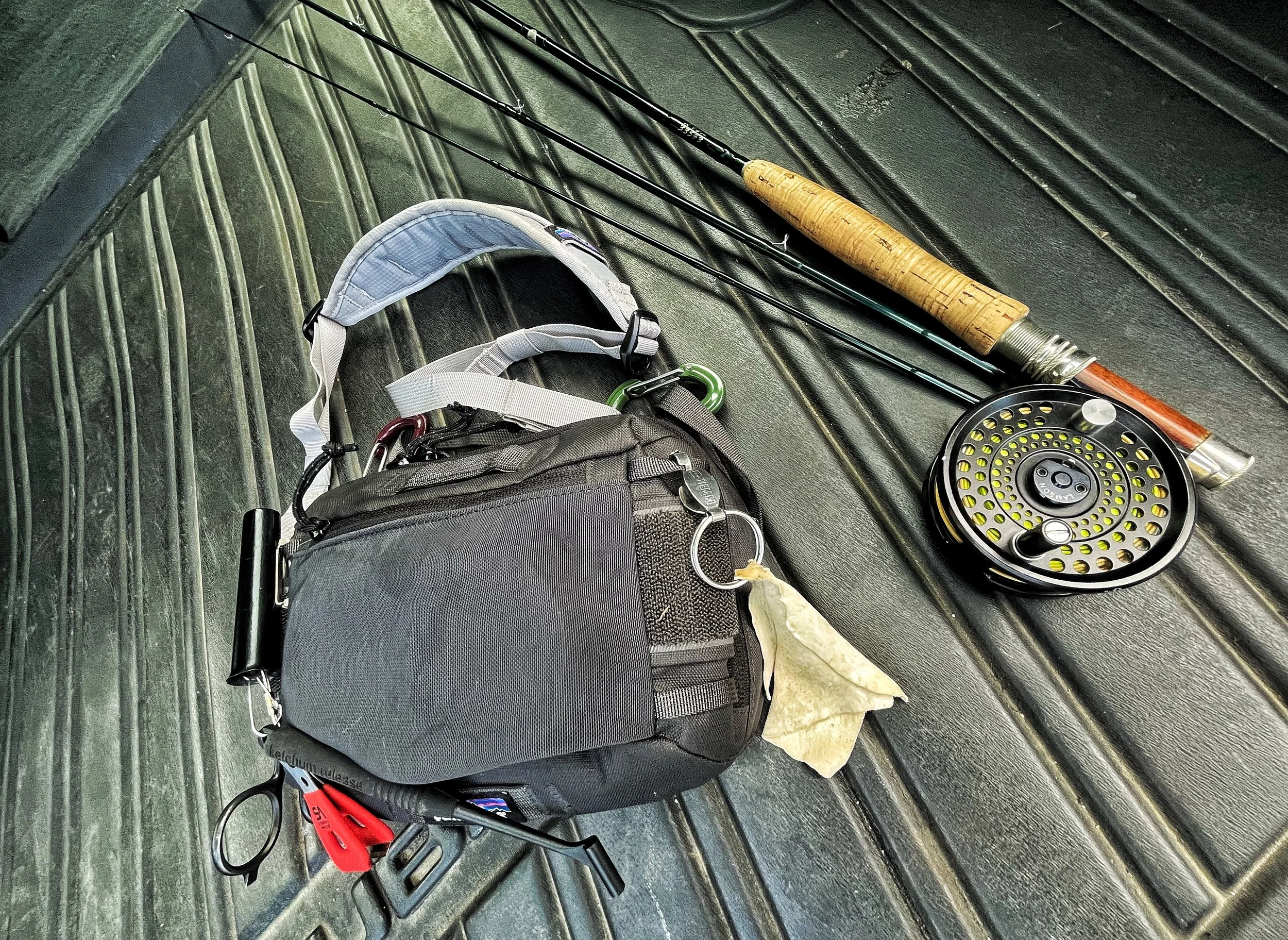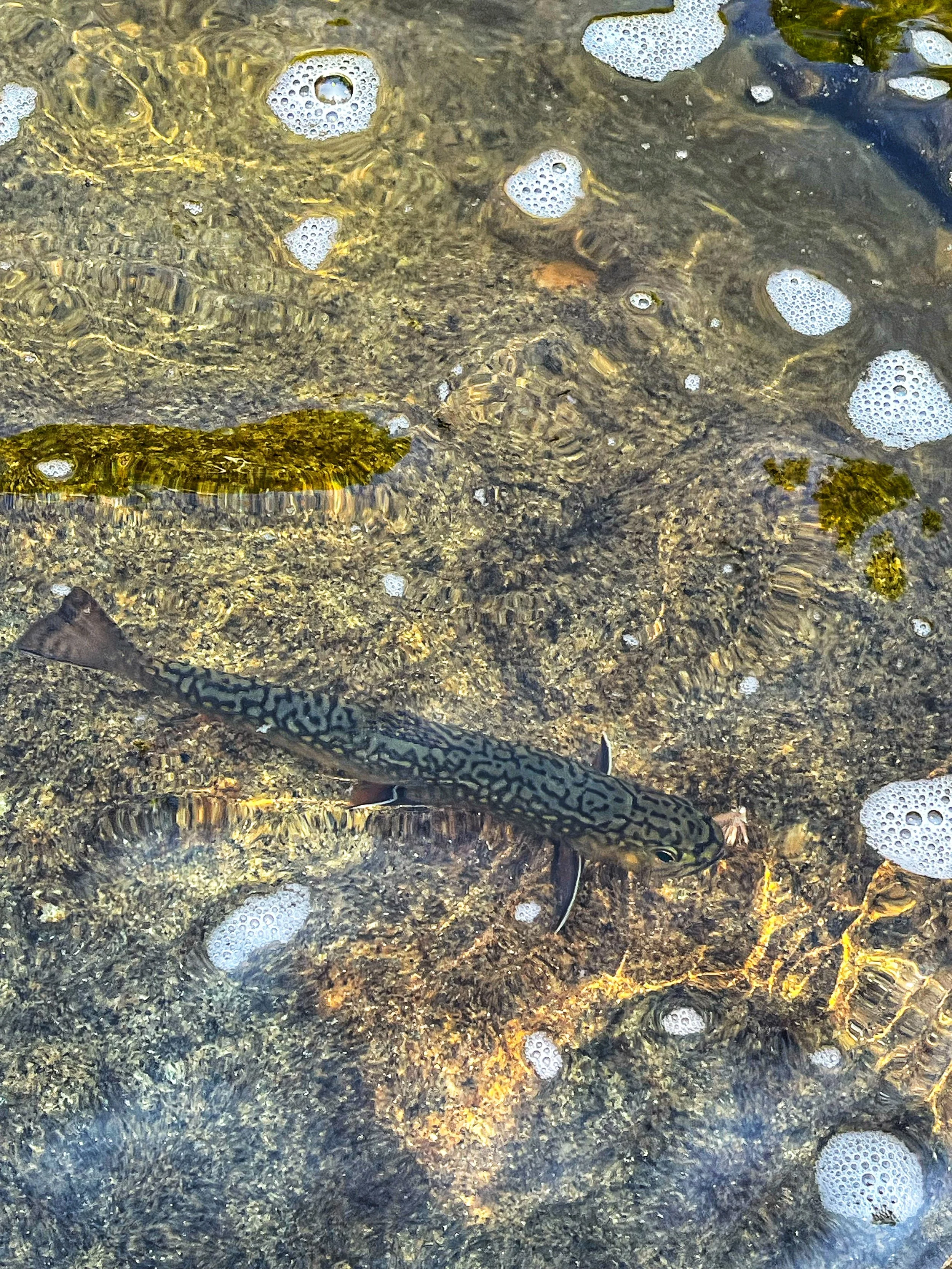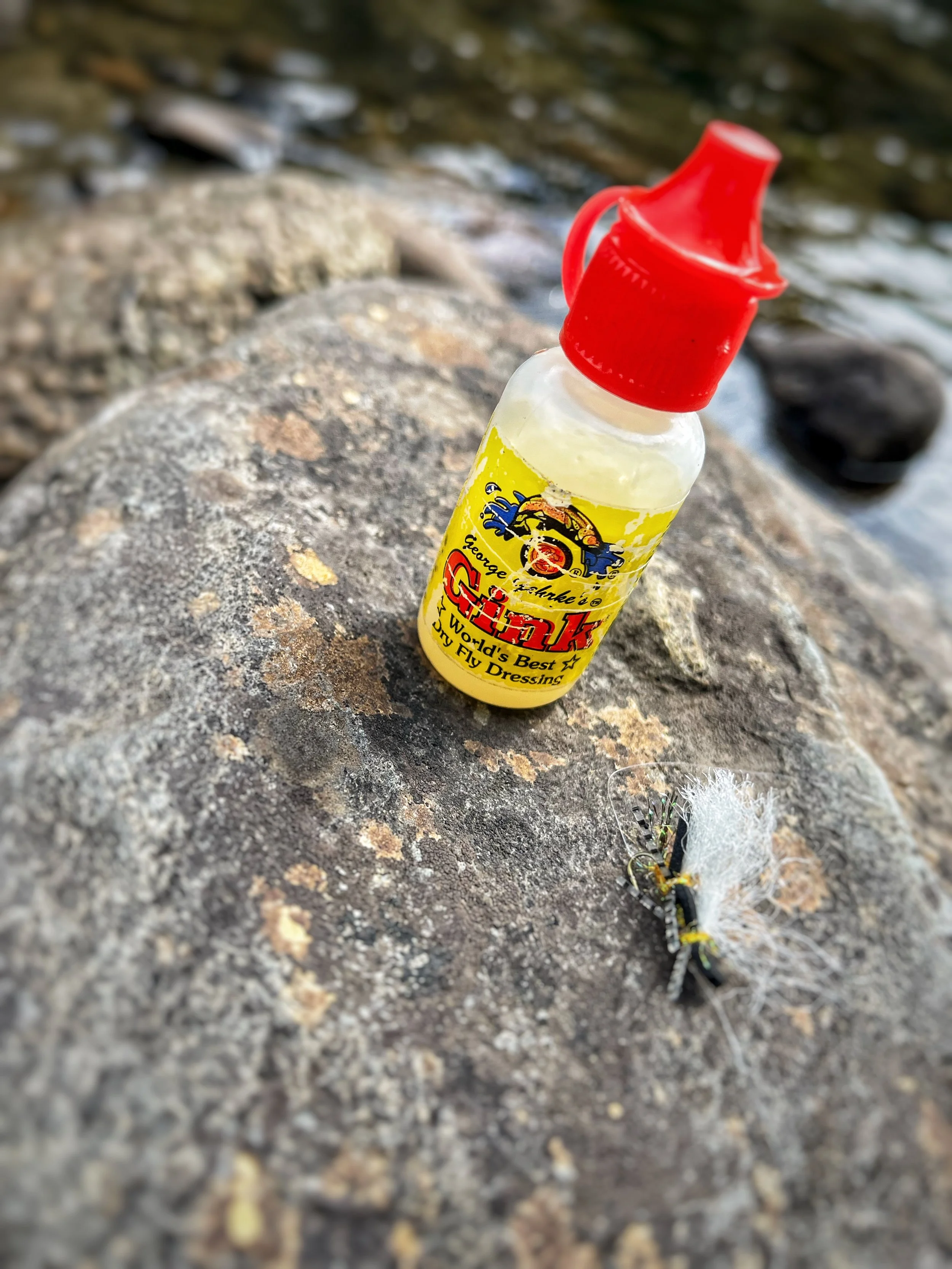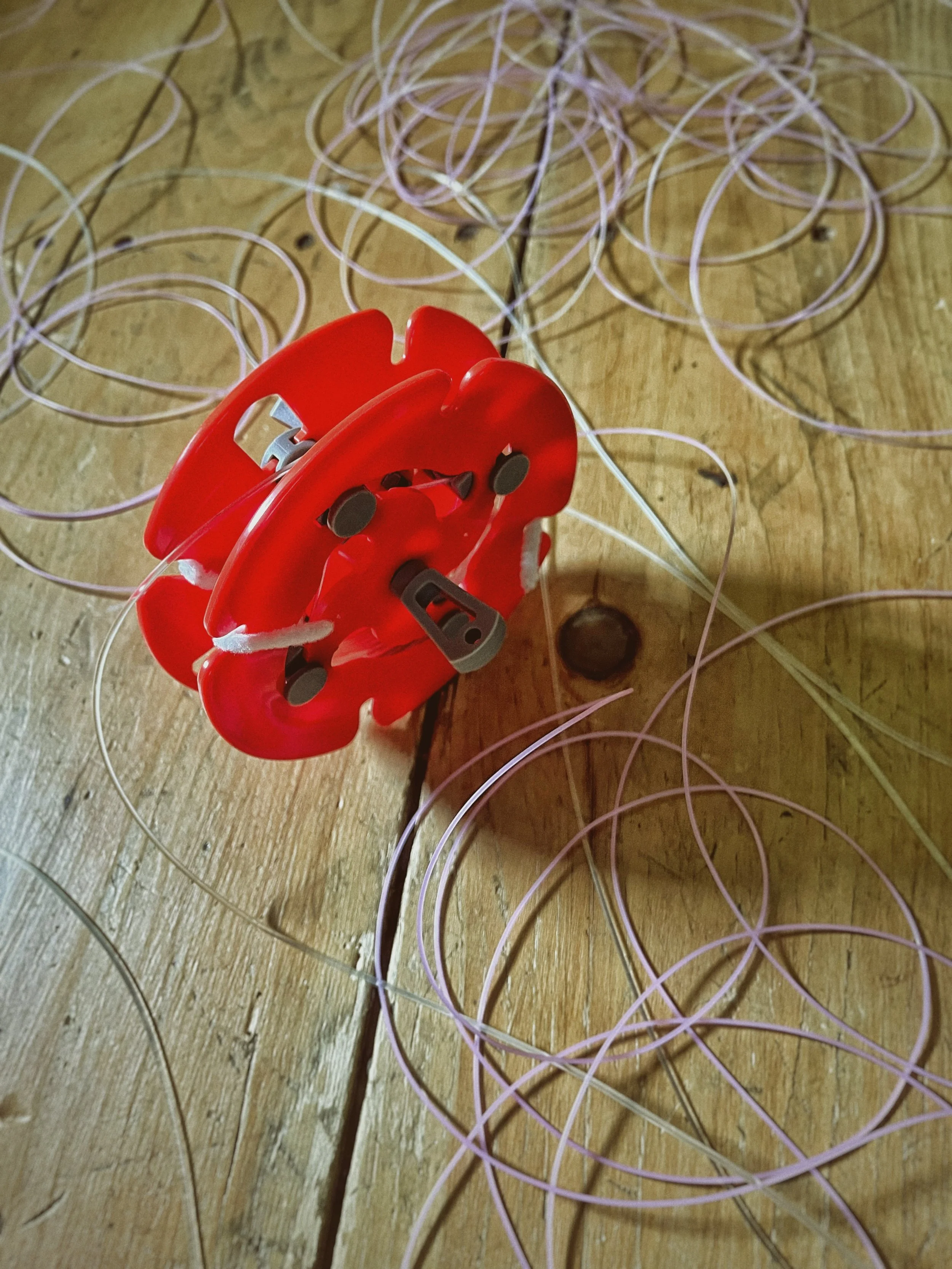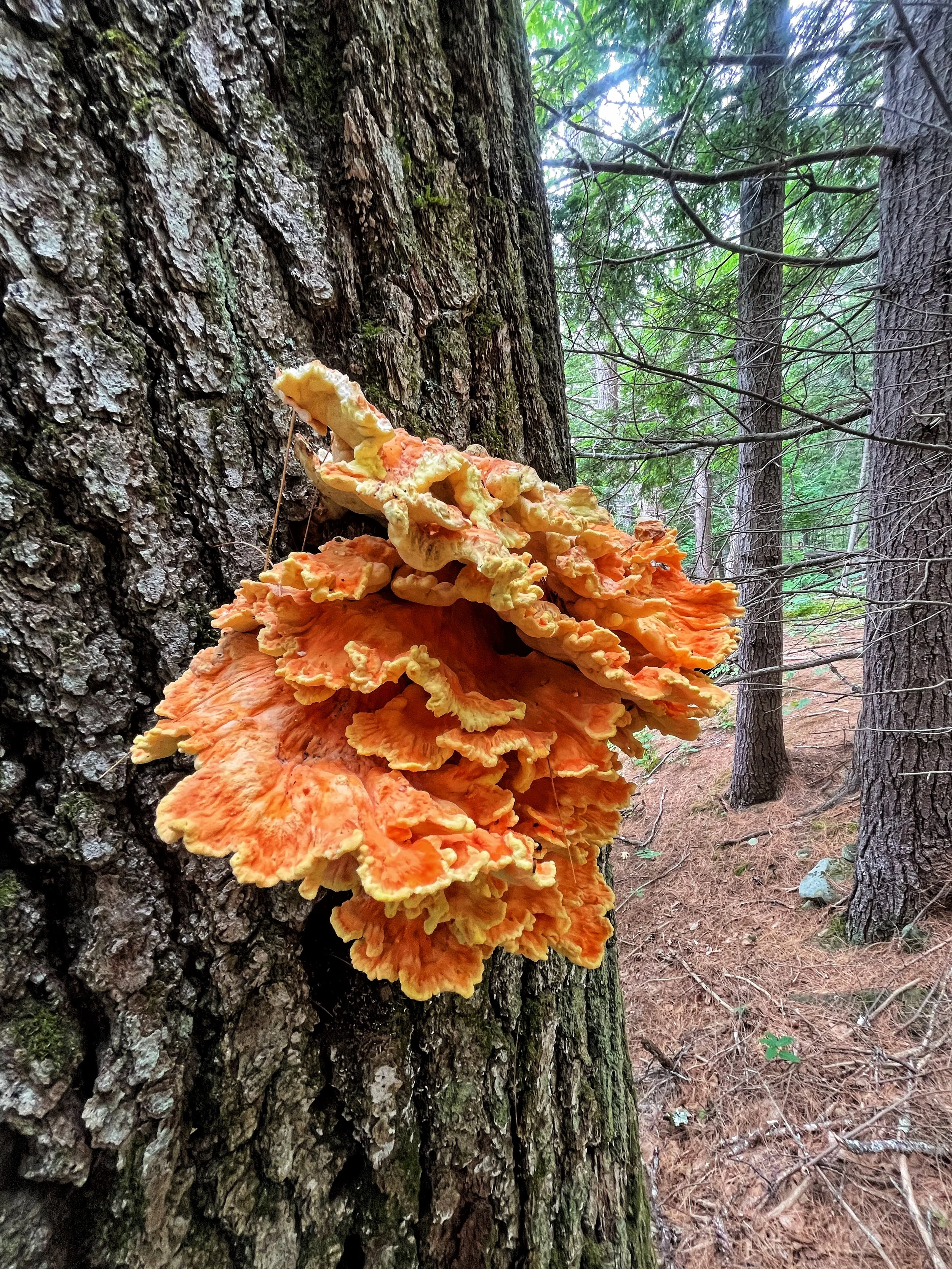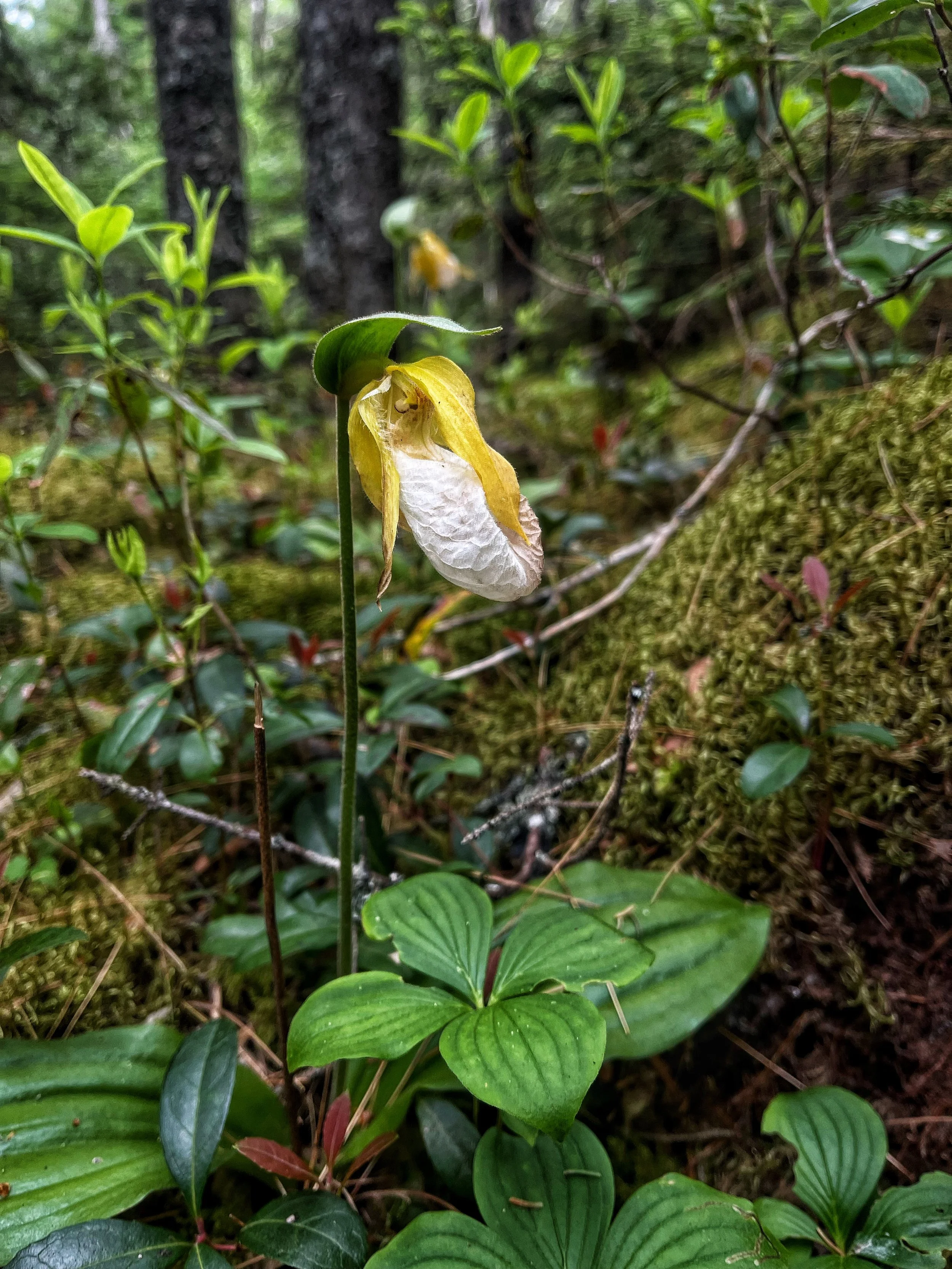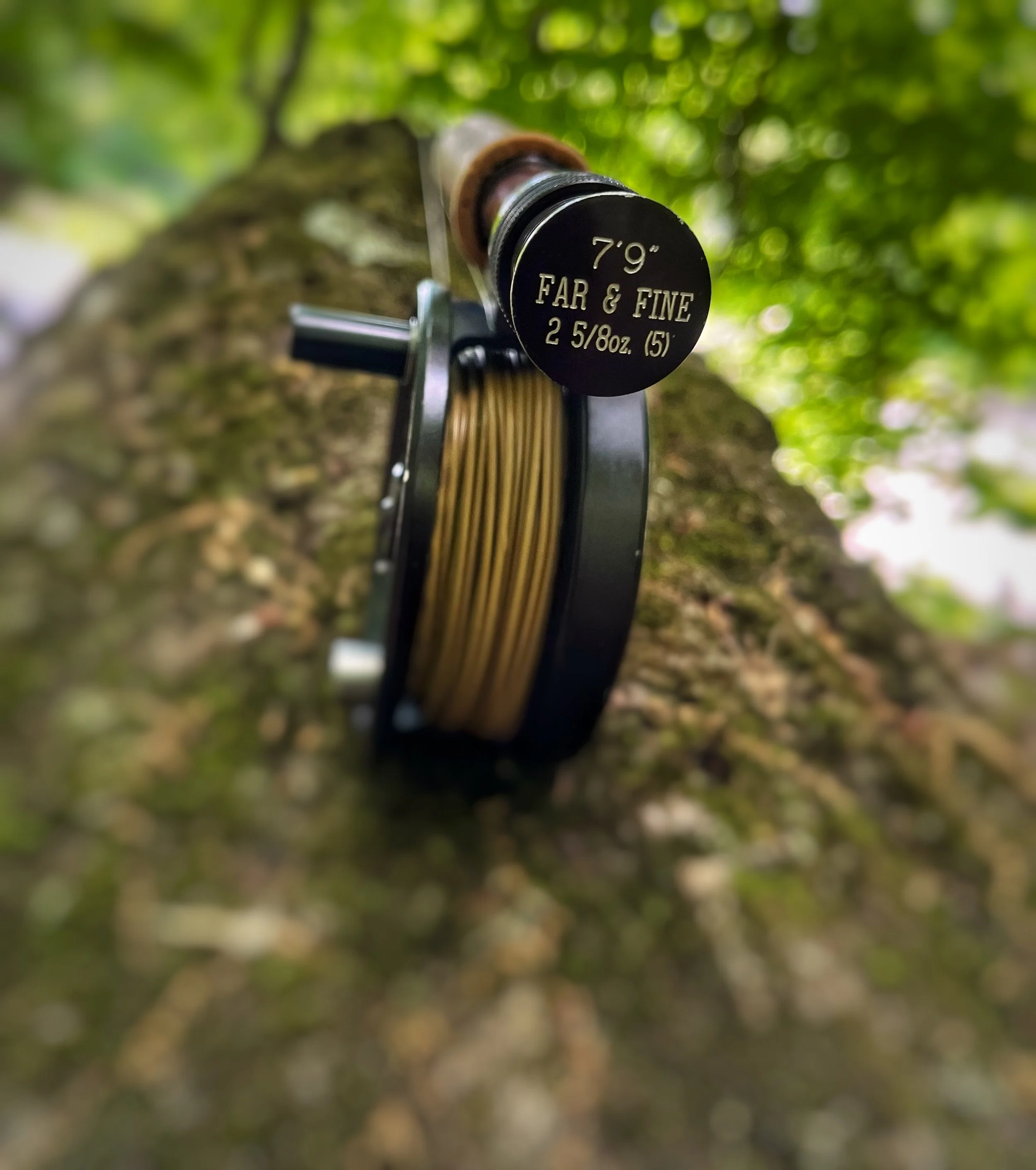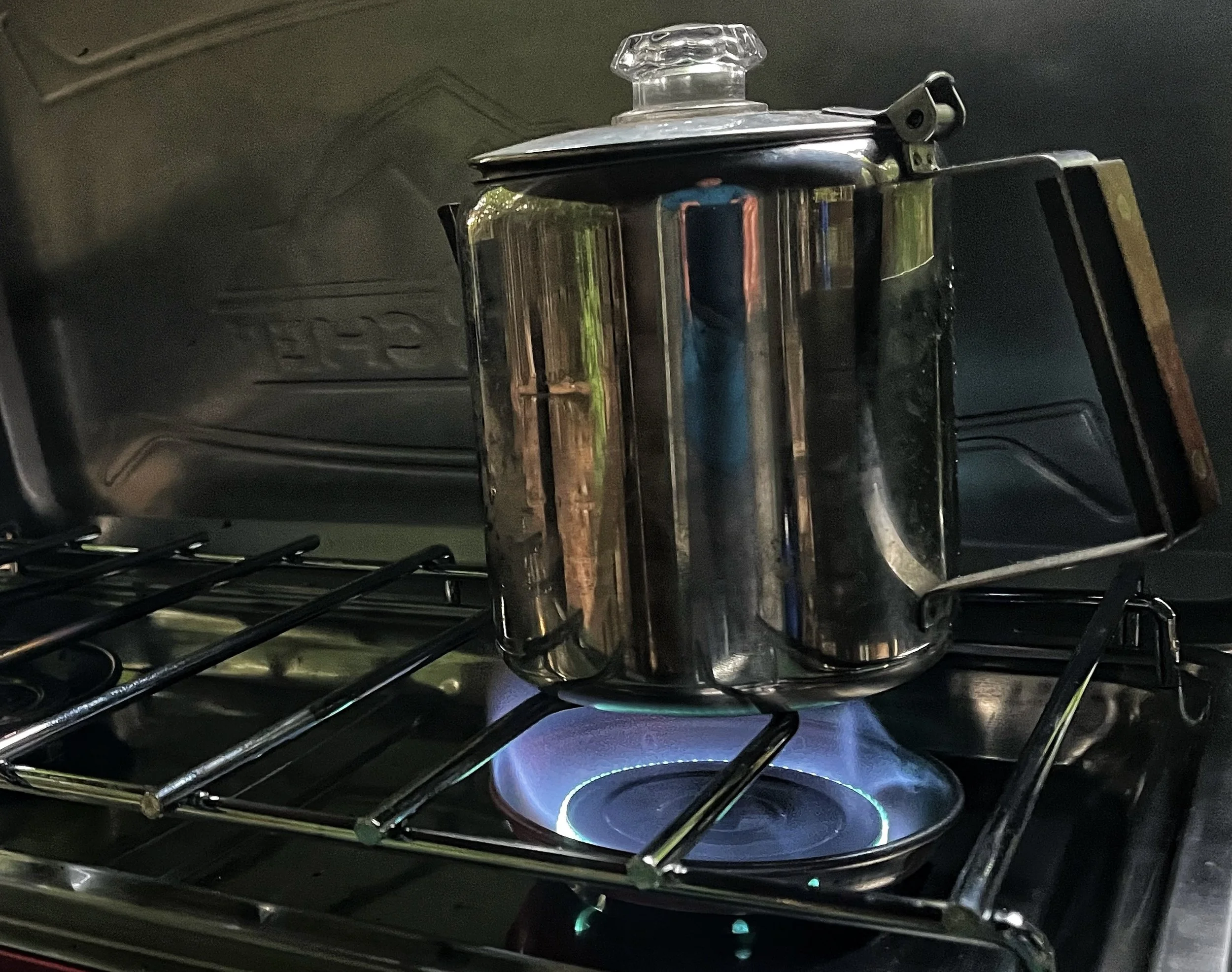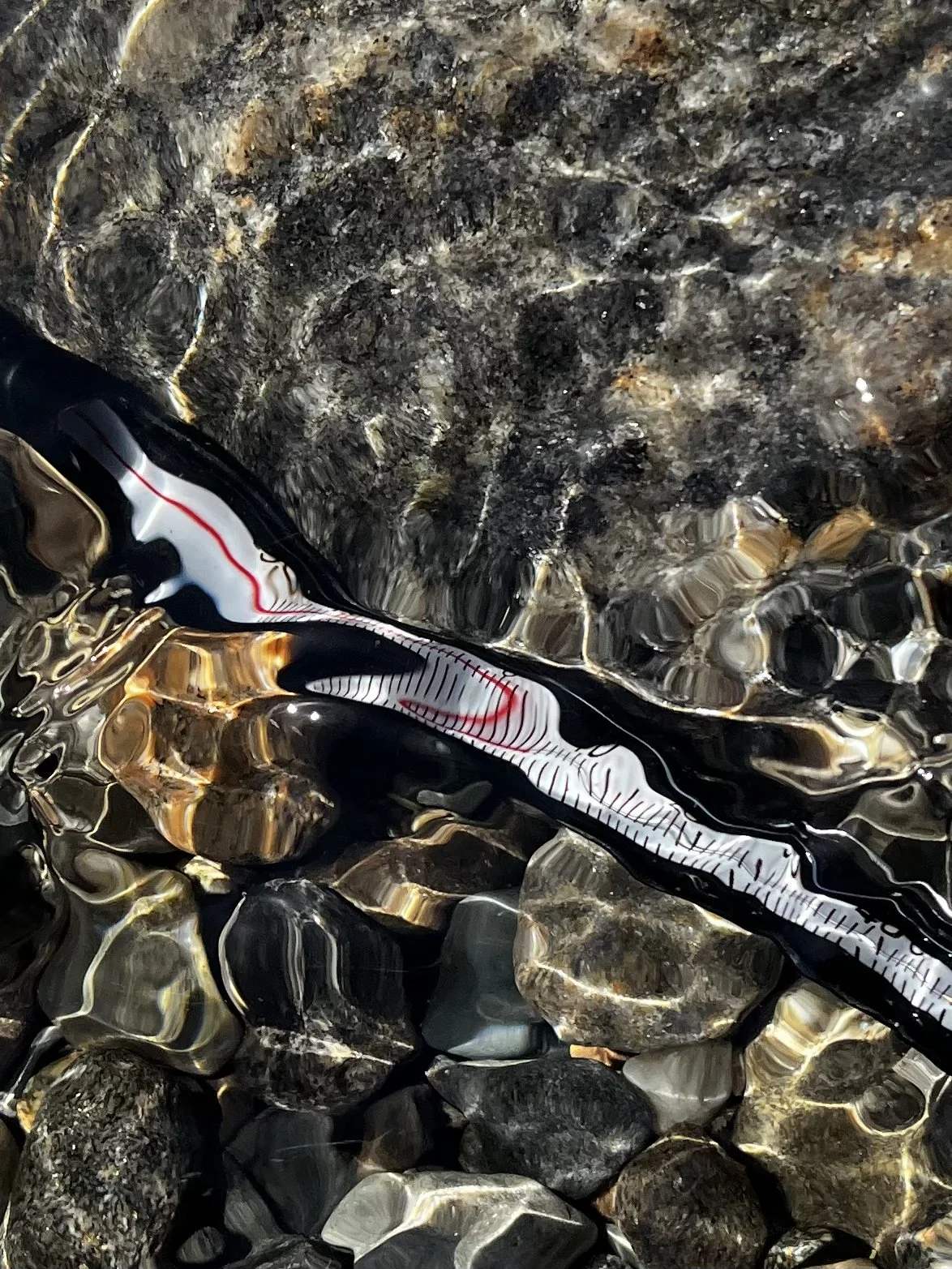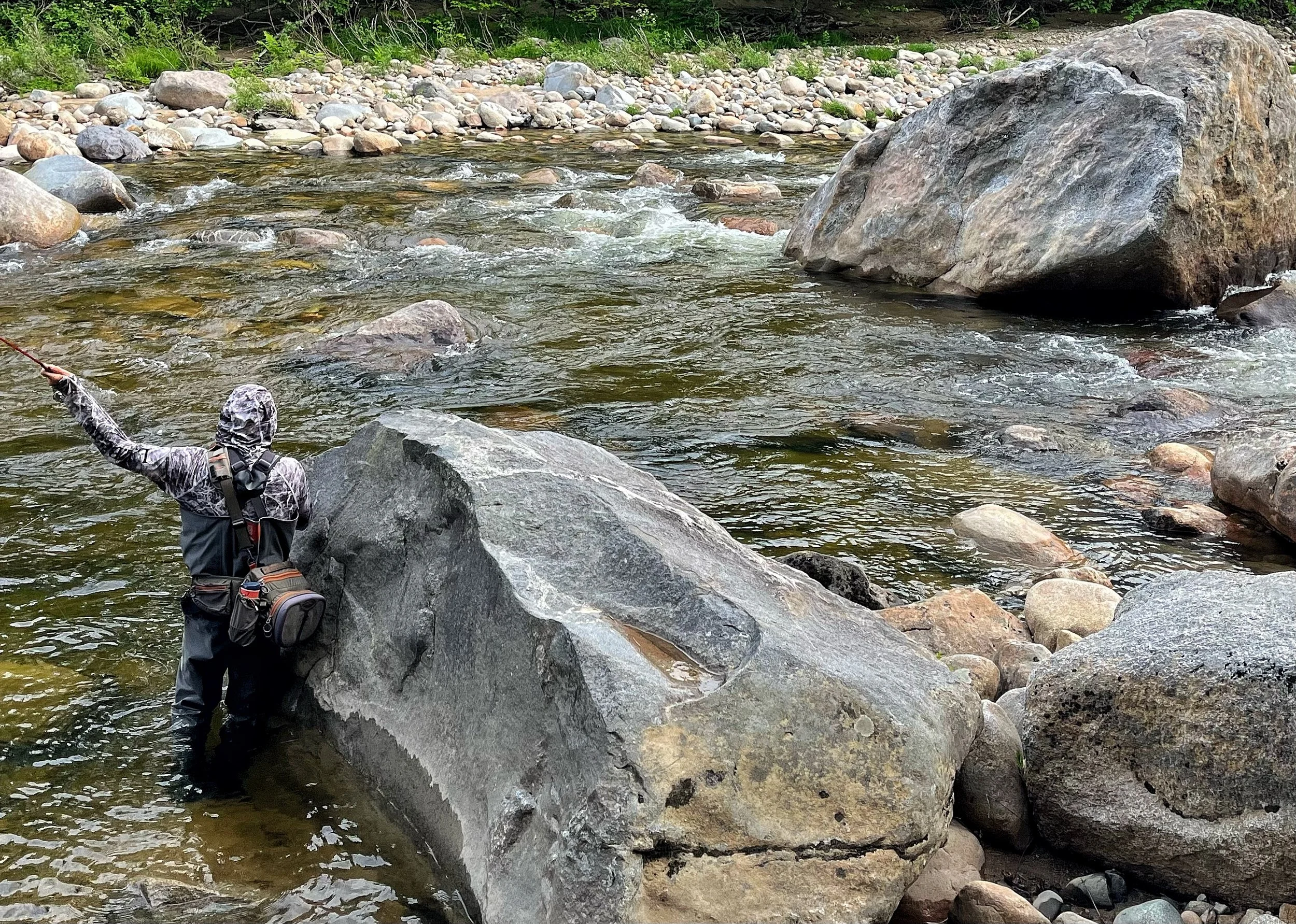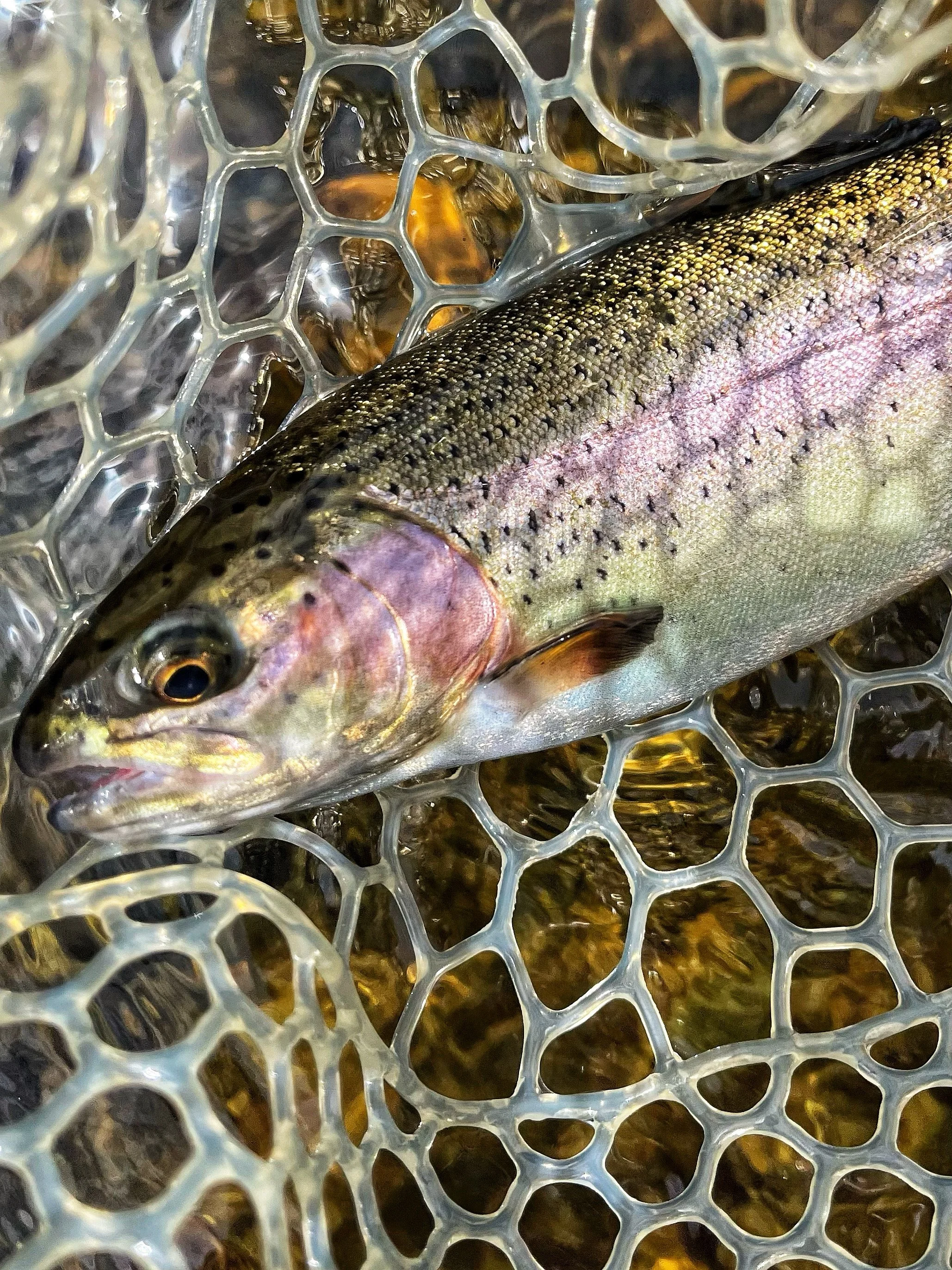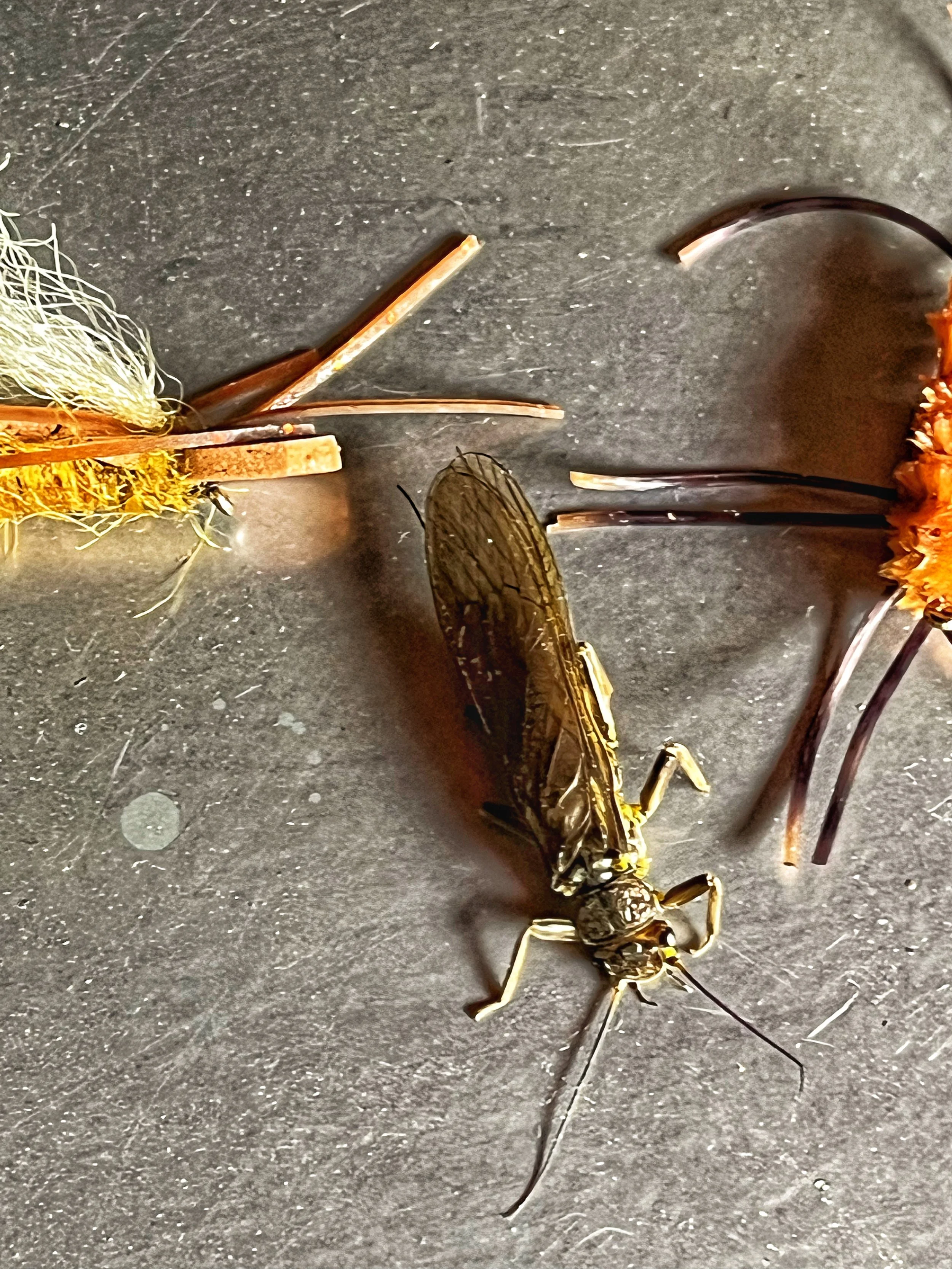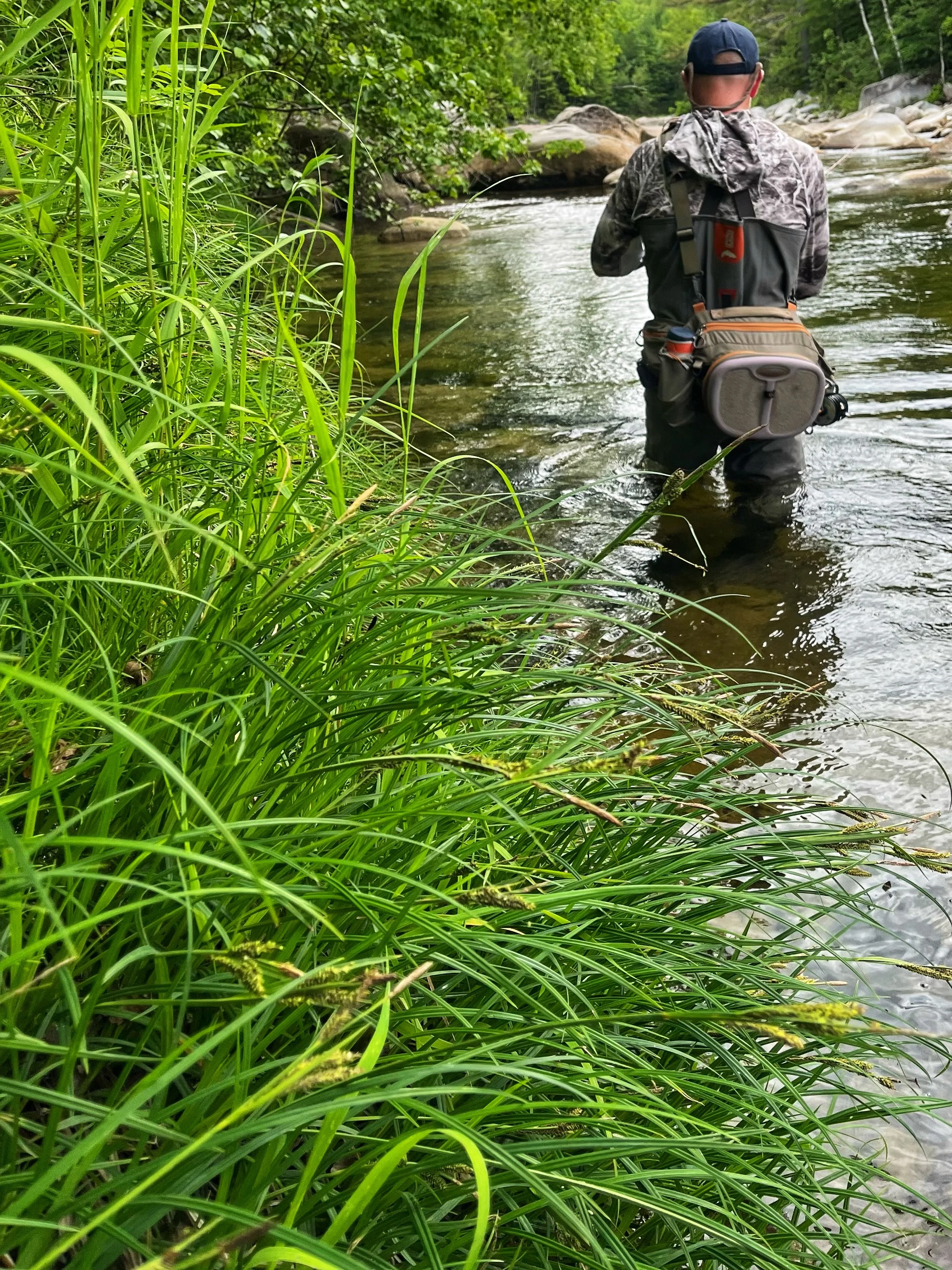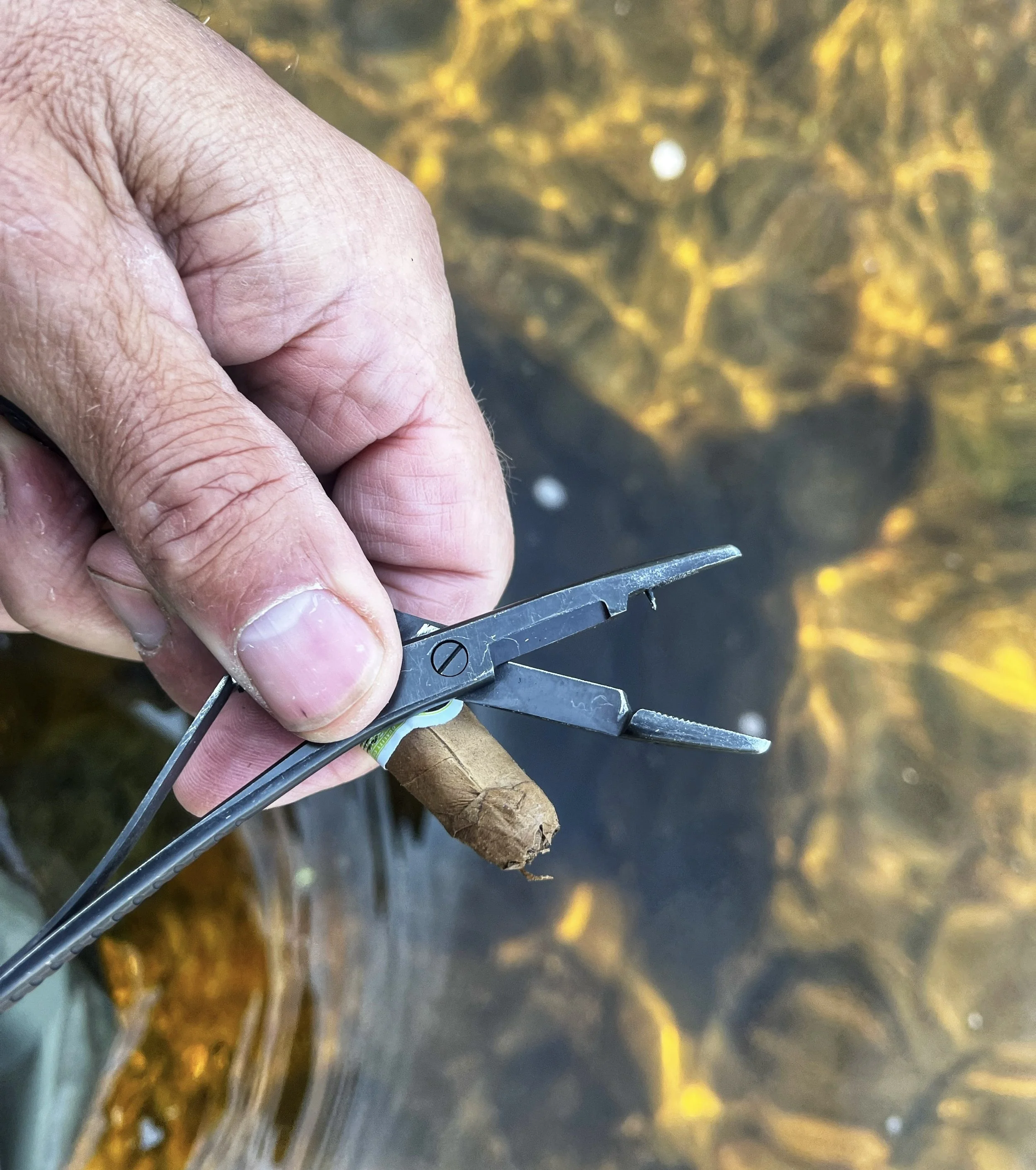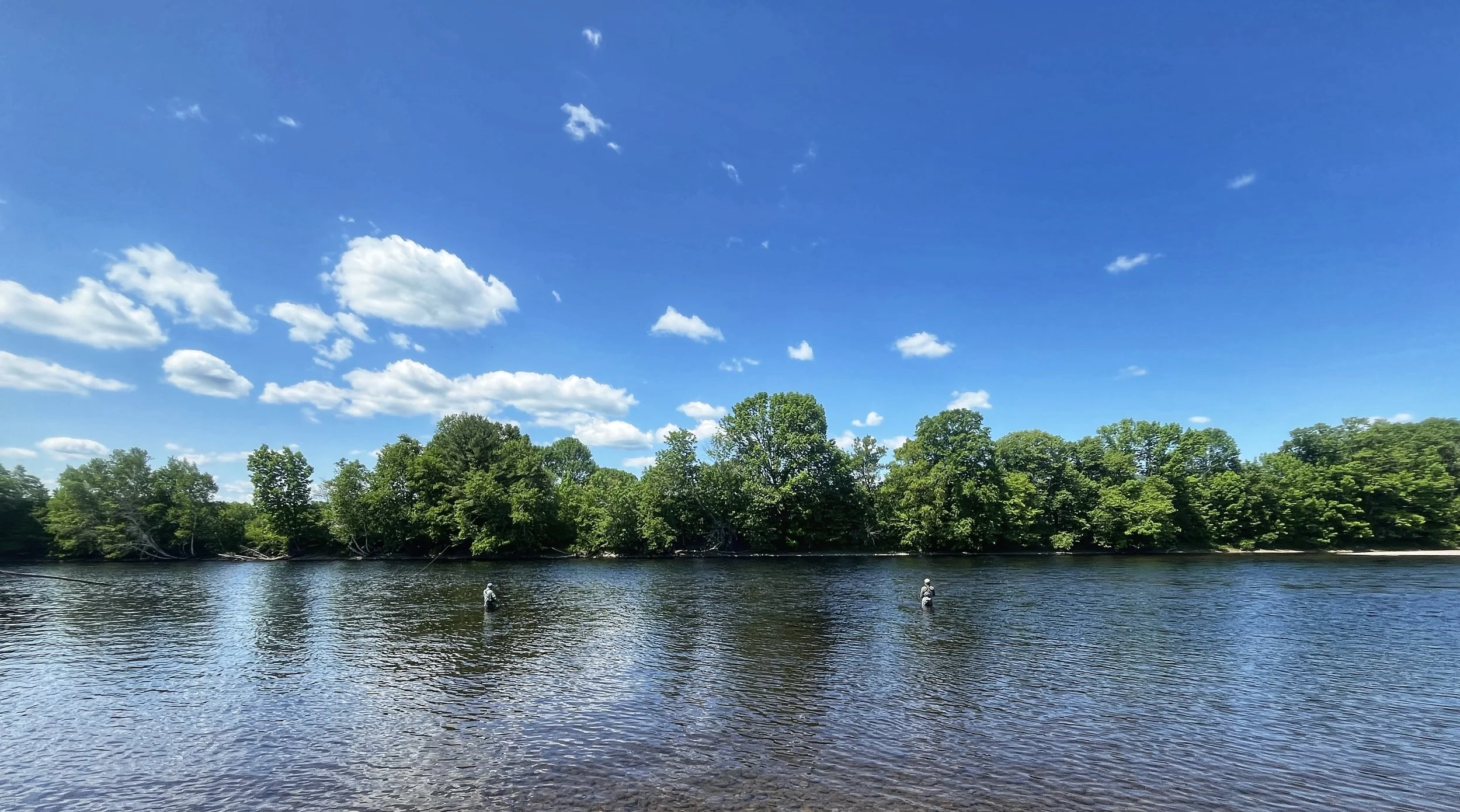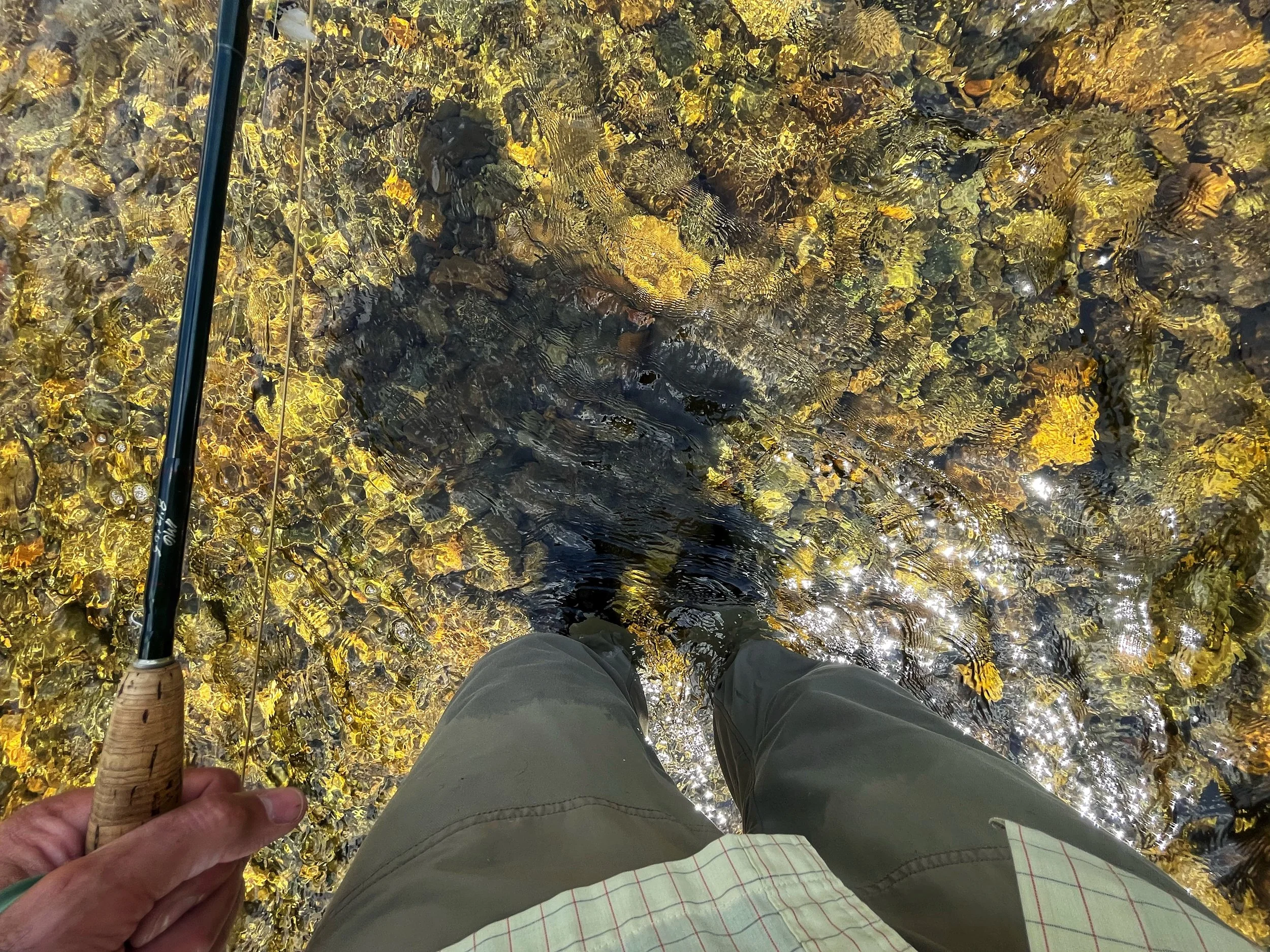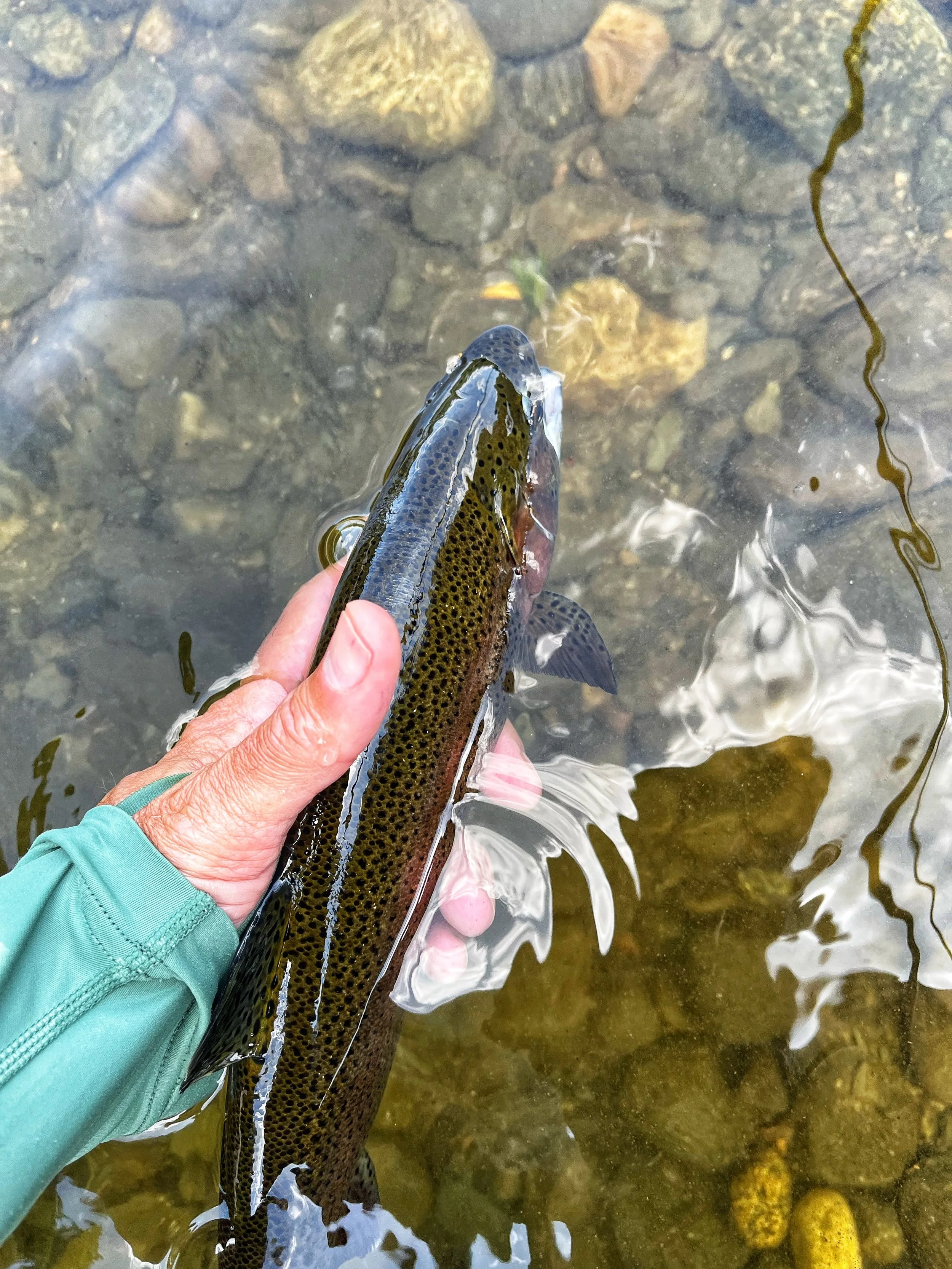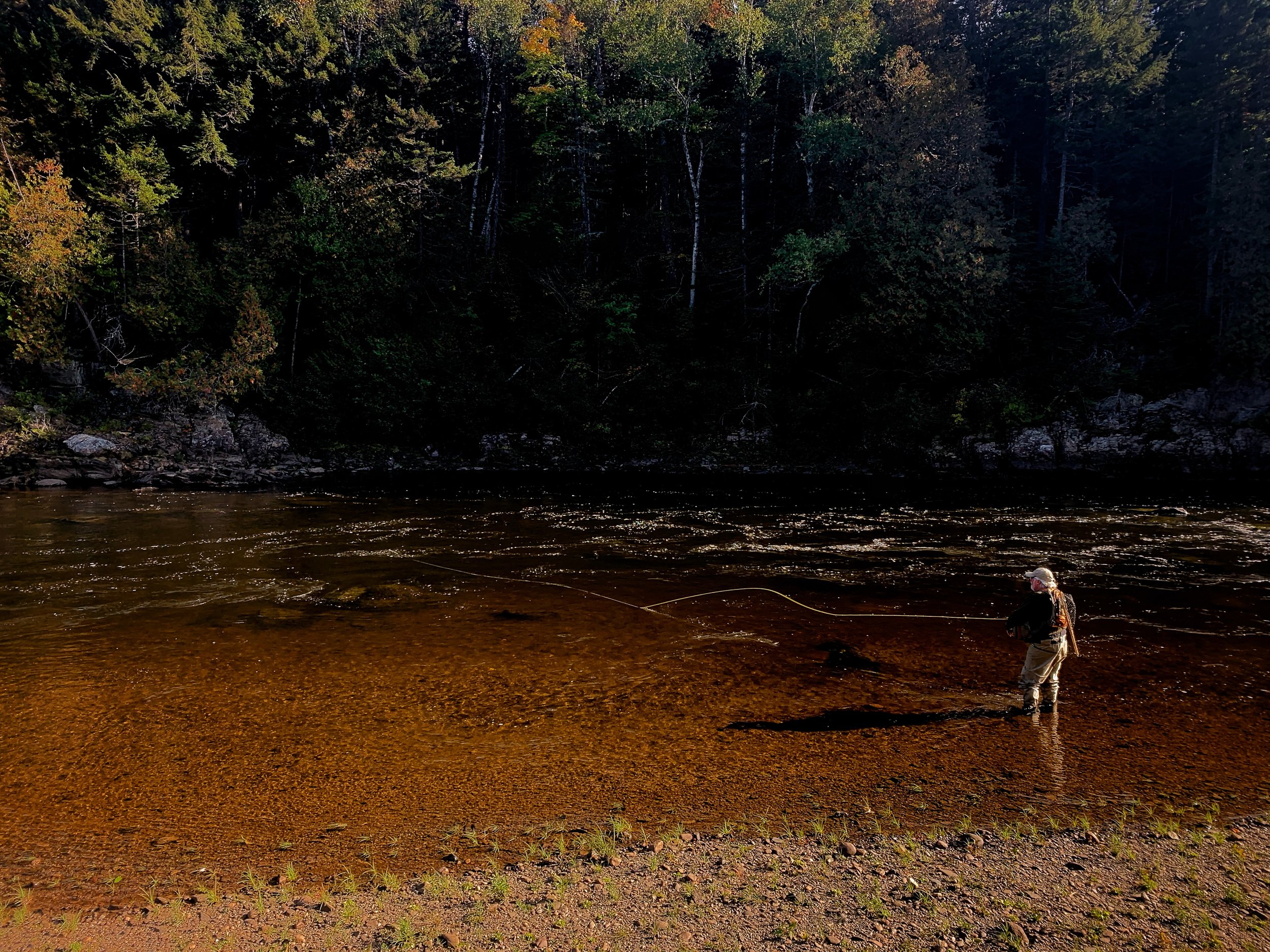
BLOG
11/20 25 The winter season is here, and the fishing season is over for us until next season. The spawn for landlocks and brookies is happening currently. We have observed fish on redds, and that’s a sure sign to hang up the gear. Give them a well-deserved break after a challenging season. In the meantime, it’s time to prep and plan for next season. If you’re thinking of doing a trip with us next season, feel free to reach out. Gift trips are always available and easily customized.
A few items of interest to get you through the dark season. If you’re looking for a fly-tying class/session with talented instructors, give Eldredge Bros. Fly Shop a call. A wide variety of styles and target-specific patterns to choose from. Side note, this is for an intermediate level of fly tyer.
We recently came to the reality of having a few waders that had reached the point of beyond repair (some had been refurbished three times). Instead of chucking them off to the landfill, mail, or dropping them off at Maine Fly Rod Company in Yarmouth. Their Repurposed Wader program will give your old waders a second chance at being a player in the outdoor gear world. From totes to zippered accessory pouches. Kudos for companies doing the right thing. Bonus points for being a Maine-made product.
11/7, 25 The end of a great half-season is over. The drought conditions that we hoped would end did not. It was a dismal fall season and one I hope to never have to repeat. The ethical high ground one chooses was a daily decision and directed our trips, or in many cases, a cancellation. Thank you to all the clients who understood the situation. Karma will repay everyone for putting the resource first.
I’d like to thank all the clients, guides, shuttle drivers, food truck workers, and lodging staff for showing up and putting in the work. An added shoutout to all of the great companies I get to work with during the season, for making my job much easier. I am very grateful for all of you and your commitment. Raising a glass to the end of the season and the beginning of another. Slainte
As for next season, there are new things in the works, and I’ll announce those as they develop. This blog will continue to move along creatively despite being flotsam in a sea of social media options. I prefer the “one and done” approach. My photography business continues onward with new fishing-specific prints available shortly. Announcements, releases, environmental actions, and links will still be available on our Instagram page weekly. As always, please feel free to reach out with any questions you may have.
I’ve been lucky to be playing this game for a long time. Within those decades, I’ve added some classic rods that fish the way I like to fish. There are a lot of rabbit holes to go down to find that one truly special piece. Castback is a previously owned fly fishing gear-specific web-based company that may have what you're looking for. Looking for a Winston LT or an IM6? Currently available. If you dig dry fly fishing, these are truly some of the GOAT. Give them a look if you’re searching for something vintage or an upgrade.
10/ 3, 25. September is behind us, and October has arrived with little change, except for incremental drops in water temperatures. Water levels are drastically low, and the tiny waters are unrecognizable. We will be seeing the effects of this drought for seasons to come. We are still out and about on a few select waters. Thin water techniques and rigs continue to be the norm. Thankfully, today’s tippet and leaders are amazingly strong, so going “thin to win” isn’t an issue like it was twenty years ago.
On the bug front, the small sizes ( midge and Baetis) are getting a bit stronger. Caddis still a player. Slate Drakes, sadly, are weak or a no-show. Wet fly swing in 18- 22 on the daily for the snooty. Swimmy streamer bite short and weak.
Probably the worst report I’ve ever written for October. I’m not going to bullshit anyone with the “make lemonade” line because that isn’t what I’d want in a guide’s report.
A couple of items of interest. There are two types of boat owners. Those who are buying and those who are selling. Head over to Small Craft Sales to give yourself a leg up in either of those decisions. User-friendly, with some solid advice on the News page.
For you commercial tyers or really good shops out there, check out Spent Fly Fishing Products for some very high-quality and harder to find materials. Guide owned/operated and dog obtained delivered goods. Winter is coming; plan ahead now.
9/17, 25 Low and gin (really good gin), clear. Water temperatures are dropping, and as great as that sounds, some waters are just too low to fish. This is determined by either common sense or ethics. Where we are fishing/guiding, it’s been fairly tough. Thin to win rigs for most techniques. Dry flies in the 16-22 size are producing most of the surface eats. Swinging a double wet rig with the point fly being a 14 with most grabs on an 18. Forget about the Skagit system for trout spey currently. A Scandi set up with an intermediate tip will get it done. Short leash nymph rigs if you’re desperate, and swimmy streamer set-ups on a weight forward in the early a.m.
This season is not over yet. All of our small stream trips will officially close at the end of this month. We haven’t done a thin blue line in weeks due to conditions. That leaves us with the options of the Dead and Kennebec rivers, along with some other extended season waters through October. There is room to book for a few days this month, but more room next month.
Gear of the week. Patagonia Quandary pants and shorts have been a go-to piece from May to October since they were first released. Wet wading, under waders, climbing/bouldering, to hiking,(shorts for the mountain bike), these simply perform. Lightweight but very durable in every way you want. After a few offwidths and too many to count pocket water scrambles/wades, I’m pretty sure I cannot find a better build. Belt loops instead of a built-in belt that never seems to work for me, pocket sizes that have the perfect volume, and a postconsumer recycled nylon that dries fast (great for those wet wading days). The look and cut keep you out of the poser category with the locals. Outdoor clothing should have multi-use possibilities and work within an array of conditions. These answer the question of which pants or shorts I should wear today for……..
9/6, 25. Not much in the way of change as far as conditions are concerned. I have never seen a drought of this length in over twenty years of guiding. Yes, water flows are low on the major river systems, but the water temperatures are still high (67-71). The small stream scene is really concerning. Great water temps for the most part (we checked nine separate waters this week). One commonality they all shared was the amount of predatory evidence. Otters, raccoons, and mink are taking full advantage of the drought. The fish-centric bird population is racking up the scoreboard daily. It’s how it works, and we aren’t going to change it. We’ve changed enough already if you haven’t noticed.
Fishing/guiding for stacked and stressed salmonids doesn’t do it for us. Sessions are short and early in oxygenated, appropriate waters. DFO, and constantly covering new water. Next week will cool things down and change the game for the better. In the meantime, finish that fall season prep.
Local Shoutout: The next time you’re in the Carrabassett Valley area, either fishing the river (not recommended currently), riding the extensive single track system (prime conditions right now), or hiking the AT, you’re going to want to refuel at Hungry Mama Tacos. Superb, quality tacos from a really cool little blue repurposed Coca-Cola trailer. A great variety for anyone’s palate, including some creative sides. (Take note of locations as they can change weekly) Grab your own adult beverage, drop the tailgate, and make the most of the last of summer.
8/28, 25: Still living in drought mode. Fire danger lowered to High. The USGS water data site is reporting that eight rivers are in an Extremely Below Normal condition. Scheduled recreational/commercial releases on the Dead and Kennebec have been either cancelled or shortened. Thankfully, we are experiencing seasonal air temperatures and shorter days. With that combo, water temps are dropping, albeit slowly. Half-day rule, with mornings being the best part of the day for the most part. Pocket water over the slick dry fly flat. Fish can be stacked and stressed currently in the thin blue lines scene. Please do them as well as future anglers a solid and move on. Our small streams are, for the most part, self-reproducing and don’t need any more predation than they already have.
Bookings for the fall continue to develop with a caveat. Small stream trips will probably not be available if conditions persist. That may be the case for the medium-sized waters as well. As always, we adapt and overcome. If there’s one positive in low water conditions, it’s now the time to hone your skills at spotting fish. Pro Tip: Look for a shadow first, not the silhouette of the fish. Oh yeah, and don’t cheap out on glasses either.
8 22, 25. Early in the morning, for a few hours at best. Trico and Baetis spinners, a few caddis, and terrestrials. Running 5X and getting away with it. Currently, flows are exceptionally low, the fire danger rating is Very High, and the rain forecast isn’t great. The one plus in this drought is to simply wade around the larger rivers and learn the river’s topography. You’ll have a better understanding of hydrology when normal flows return.
In the meantime, it’s still G&T season. Cheers!
8 14, 25 Ninety-degree-plus air temps this week sealed the deal for a while. We'll take a break for a bit until the conditions cool down. Bass trips are an option if interested. It’s a good way to polish your streamer game. Not much else to say except take advantage of the summer and prep for the fall season.
August 7,25. Truly the Dog Days of Summer. Hit it early and check temps per usual. Beware of temp-stressed fish pooling up in a cooler trib, spring hole, or thin blue line. It’s the dry fly only season for us; we aren’t into the nymph rig when snouts are occasionally showing.
Higher-elevation small streams are always worth the effort. Grab your favorite fiberglass rod and a box of classic patterns and go explore. Other waters are a bit hit or miss with lower flows(we need rain). Summer Baetis, caddis, spinners, and dead/spent patterns (16-22) round out the hatches. Golden stones are still around in some locations (dry patterns very early a.m.) Long leaders (12’x 5-5.5X) are standard for waters like the one pictured below.
That’s the deal, and it will continue through next week. GO SOX!!!
July 31, 25. Post stream of consciousness salt trip. Dawn patrol starts, dark roast fuel, crab, sand eel, and shrimp patterns, Terns, mono cuts, robustos, clear flats, refusals, wag offs, purely ignored presentations, branacle scrapes, offshore winds, flourocarbon, advice from The Tackle Shop, double hauls, striped flashes, G&Ts, resharpened hooks, daily rinse off, clean lens cloths, 20-70mm workhorse, tall boys for lunch, Tylenol, evening light, barefoot wades, Crazy Charlies, hard line sets and that sinking feeling in your gut about the lack of schoolies.
Gear of the Week. Scientific Anglers ECOoastal stripping basket. If you’ve ever fly fished on the coast of Maine, then you know the value of a stripping basket. Keeping tangles at bay is paramount when casting for distance and efficiency. It’s even more important when you are taking shots at visible cruisers. Missing your cast because your line is tangled at your feet, or the never-ending wave breaks, is a great opportunity to develop your creative profanity skills. This basket is super lightweight, durable, and functional. One of the best signs of a well-designed piece of gear is that you don’t notice it when you’re fully engaged in the task at hand.
Don’t overlook the crossover potential with this stripping basket. Using it in a stillwater application makes a lot of sense. Our stillwater kit usually consists of two to three different line setups. Retrieves can vary throughout the session, from the hand twist to as slow as you can crawl it. The basket can handle a wide array of line diameters from floaters to thin full sinks with ease, and increase fishing time by eliminating the need to restack the inevitable line pile-up. The stillwater equation is simple: Longer casts at the correct feeding depth with the correct retrieve feed fish correctly.
July 17th, 25. Short weekly update. Full on thin blue lines this week with early morning starts. Finding cooler water takes a bit of work, but the rewards are worth the effort. No crowds and willing dry fly eating brook trout sessions with plenty of time left to do summer right.
Pro tip. It’s a given that a high-floating hairwing or foam dry fly pattern will produce. It’s actually at times too predictable. Change the game by rigging a 5X or 6X leader and tying on dry patterns in the 18-20 range. It’s a great way to improve your small dry game and practice your casting accuracy at the same time. An excellent way to prep for a spring creek trip without the private water rod fee.
Enjoy the summer season to its fullest; it goes by much too fast.
July 10, 25. Water and air temperatures are in continuous flux. Mornings are stronger than most evenings. Midday sessions under a full canopy for thin blue lines. We’ve worked the small to medium waters more than the large due to better dry fly opportunities. Summer is made for the dry; we’ve got the fall for nymphing. More attractor patterns lately. From the foamy ties, old school Royal Wulffs, and high-riding skated caddis, it’s all working. Dry/dropper rigs for the deeper runs. Dropper nymphs in the Czech style eliminate the need for a splitshot to sink quicker. Wet swings with a light tip for the trout spey session are pretty productive, especially in the early a.m. Half days or split sessions for the foreseeable future.
It’s summer. Start in the dark or leave in the dark, carry a thermometer (and use it), invest in good coffee, recharge those headlamps, and skip the grip and grins. It’s going to be like this for a while, so embrace summer for all it is. You don’t have to shovel heat.
Gear of the week. Scientific Anglers Regulator Spool is the last line winder you’ll ever need. I’ve made do with everything from camera lens cases to a Foster’s Lager oil can to spool-up lines; they all have one thing in common. They all suck. Changing out or loading lines is fast and efficient. Lines are coiled neatly after removal (Pro Tip: save the pipe cleaners that come with your new lines to secure the line for storage if you’re keeping it). Installing a line onto your reel is simple, and it’s a much better tool than the number two pencil held between your knees trick. I carry it in my truck kit for field changes. I’ve had more than one client show up with a brand new line in the box. Keeping that fresh line off the gravel parking lot is the first step in line longevity. Little-known fact: Fresh, clean lines catch more fish.
July 3, 05 Summer sessions. Early mornings, foam patterns, thin blue lines, glass rods, classic graphites, and the occasional evening forays when conditions permit. A thermometer is your MVP every day. We are currently offering half days until further notice. Conditions are good for sight fishing and dry fly fishing. Hatches of caddis are still happening, Golden Stones in a few select locations, and summer Baetis soon. Biting bugs are somewhat strong, with the Moose Fly taking out chunks one angler at a time. We haven’t tied up a nymph rig in a few weeks. Relying on the dry/dropper setup daily. This will be the MO for a bit. Not a bad way to start your day.
We have availability throughout the next few weeks if you’re interested. Clients are booking September and October dates currently. Openings for the fall season are pretty good, but won’t last forever. Feel free to reach out with any questions.
The Keep Fish Wet folks are running the annual No Fish Dry July campaign again. It’s a great way to take a break from the overworked “Grip and Grimace” images and look around a bit more at the important stuff.
Pro tip. It’s foam fly pattern season currently. Give your patterns a bit more flotation by combing out the wing and adding a powder floatant throughout the material. This is best done with a brush applicator to get the secret sauce into the fibers. We prefer the High N Dry powdered floatant for this. When you witness a refusal on those Golden Stone patterns, it’s time to change the silhouette, not the fly. Rest the fish a bit, comb it out, and powder up the bug, maybe a twitch or two. SET!! (60% of the time it works every time)
Have a safe and enjoyable 4th of July. Eat a hot dog, grab a tall boy, and blow something up! Happy Independence Day, Merica!
June 24, 05 Heating up. The inevitable rise in water temperatures has arrived, and with it, the half-day schedule. Mornings are the coolest part of the day, the most productive, and far more comfortable for anglers and fish. Maine does not have a Hoot Owl system in place ( some western rivers have already issued them), but we self police both in terms of guiding and personal time. Bring and use a thermometer on every trip from now on for best results and ramp up in tippet size. For more information on best practices, give Keep Fish Wet a browse. There’s some really good information on their site to further one’s fishy knowledge.
Stonefly sessions in pocket water (higher oxygen levels) have been lights out compared to past seasons. Golden Stones (two sizes) and Fish Flies patterns lead the pack. Dropping off a Pat’s Rubberleg has been very productive. Pro tip: Our pocket water rig consists of a SA 7.5 Absolute Trout leader in 3X. We tie on a non-beaded version rubber leg off the dry fly hook bend and extend the drop to about three feet. This reduces the hang-ups and allows the bug to swim better in the pocket water. A super fun and visual way to fish.
Caddis, mayflies, and midges are past peak, but are still showing up. Presenting the dead versions working well. Terrestrial patterns move to the front, especially on the medium and smaller waters. Do not underestimate the power of a good beetle pattern in sizes 12-16.
Local Shoutout. If you are finishing a trip with us, heading north to explore some thin blue lines, or looking to power back up after hiking in the Bigelow Range, pull into Rolling Fatties. Some mighty fine locally sourced burritos and other offerings. A great selection of craft Maine beers on a rotating tap, and also a solid tall boy lineup. Rob (the dude behind the bar) knows his way around a Margarita if you're interested in that kind of thing. Eat and drink locally.
Have a great week, fish responsibly, and do something good.
June 19th,25. The dry is front and center. Single or double rigs, an adult with an emerger dropped off the back, foamy, the deadly dead patterns, super selective style to Ausable Wullfs. Blind searching with a dry is our first rig of the day. Some days we stay with it all day, others we give in to other rigs and techniques. The dry dropper system has been the workhorse; on some days, the nymph is the money fly, and on other days, it’s the dry. This is the first week of foam patterns on small and medium waters. Nothing too big (10-14). These waters are producing some larger-than-expected residents. Dropping tippet size to the 4- 6X range also.
Nymphing rigs are more of the short-leash type. Easy casting and fast to rig. Pattern size has dropped from weeks past. Caddis is still the top dog in the lineup. Adding a micro shot occasionally if needed.
Streamer style of the week: leeches, larger soft hackle types, and muddler styles. Nothing too big but swimmy. Using a variety of retrieval speeds and presentation locations will be rewarded. The down-and-across method has proven itself over time. The upstream dead-drift jig is a technique that you should develop and add to your quiver.
Swinging wets. Probably the most relaxing way to fly fish and observe your surroundings ever devised.
Gear of the week. I believe in going as light as possible in any pursuit. Climbing, hiking, photography, life, etc. Too much of the gear one carries is a one-trick pony. If I’m going to use a tool for fly fishing, it’s got to be multifunctional. The Dr. Slick scissor or mitten clamps are an everyday carry. Solid performer in all areas of use. Fly removal, clamping split shot (serrated teeth grip shot very well), cuts tippet from 6X to butt sections, trimming fly hackle and hair, built in pin for cleaning out glue filled eyes. Scissor edges stay sharper longer than most nippers. Doubles as a cigar cutter in a pinch, also. Available in black stealth for the stealth vibe as a bonus.
June 13th, 25. Overall, it’s pretty damn good. It was an almost complete week without a nymph rig. Dry, emerger, and dry/dropper have been the go-to systems, with no complaints. We had a March Brown session that will go down as pretty much epic. The caddis hatches have been consistent, and we continue to develop newer ways to be more productive during the emergence. Everything from double dry rigs, cripple deaddrifts, and the swing and lift (ramp up one or a half tippet size for this). The streamer game has completely changed, with smaller fly size and tippet, as well as shelving the sink tip for a little while. It’s been nice just to throw a weight forward all day, with only tippet changes. Dropping a soft hackle off the streamer is not a bad idea either.
It’s the time of year to simplify your approach and move back to basics. Standard patterns and techniques will get the job done. Don’t overthink it when ten different bugs are floating and flying around. Observe individually feeding fish, read the rise, and don’t flock shoot. Three rules to follow with rising fish.
We meet many of our clients in the town of Kingfield throughout the season. Most want a coffee for the commute to the water. Do yourself a favor and stop in at Marmee Dearest Espresso. Grab a great coffee or a homemade goodness for the road. It’s worth the stop.
Gear of the week. CSSA(Can’t See Shit Anymore)category. As I was told long ago by the late great Jim Thibodeau, as I tied on a size 20 without glasses, “Just you wait”. As usual, he was right. I’m using 1-1.5 glasses for tying flies on, blood knots, and reading. For guiding, I rely on Flip Focals. Pure function in terms of ease of use and storage. No need to reach into a pocket to grab your cheaters. I ran Clics for several seasons, but I found that having another item around my neck wasn’t working well. Hanging a camera, a lanyard, and occasionally a pair of binoculars was pretty much the limit. I didn’t need another item tangling up the prearranged gear disaster. I still use Clics for everyday normal use, but Flip Focals remain the top dog for my fly fishing needs.
June 5th, 25. Currently, the dam-controlled rivers are dropping in levels. Medium and smaller moving waters are pretty stable regarding flow and water temperatures. We’ve worked a couple of thin blue lines recently, and the results have been good. Resident populations with no sign of the main stem transients looking for thermal refuge. One takeaway from the small stream gigs has been fly selection. Most often, it’s a foam-type attractor or classic old-school pattern that gets it done. A caddis pattern was the clear winner in terms of productivity. That being said, caddis is king currently. Whether large or small or stillwaters, caddis are getting it done.
Nymphing is, as always, a producer. Dropped down in tippet size due to clarity, even at higher flows. Stonefly patterns (size 8-12) added to the mix as well as attractor nymph patterns like a Lightning Bug. Swinging pre and post-hatch is a pretty good idea. Streamer fishing has been solid with a mix of sizes, colors, and flavors. Kiwi Muddlers and Zoo Cougars were stellar for one full day. The next day, it was a jig pattern that connected. Every day, no matter the technique, is a new day. Yesterday was the past, fish the future.
Dry fly fishing has been very good when the noses are up. Blind searching with a dry was met with mixed results. One morning, saw us hunting heads in a multi-species hatch. Four fish were hooked, one on a March Brown Sparkle Dun, one on a tan X2 Caddis, one on a spinner pattern, and one on a Parachute Adams. Observe what’s going on with individual fish when the multi-hatch is happening. Day in and day out, it’s been caddis. Multiple sizes, colors, and stages of life. Don’t dismiss the caddis skating technique when things get a bit frustrating.
It’s pretty stellar right now. Is it perfect? No. It rarely ever is. An open mind to exploring new or off-the-radar waters isn’t for everyone. For me, it’s essential.
Gear of the week. Fulling Mill Pocket Box. I use this box for specific hatches. One for caddis dries, one for caddis emergers and cripples (notice a few gaps in those rows?), one for Baetis, etc. An absolutely perfect spinner box also. Great size for a quick addition to the kit and organization. Slim profile easily fits front and center in any pocket for quick access during the evening hatch. No need to search through your overfilled “everything'“ box looking for that super secret emerging cripple caddis pattern. These are essential in saving you time and work great at eliminating the need to carry around patterns that are no longer in season. If you’ve reached the level of fly fishing zen guru, it might be the only box you carry all season long. I have yet to meet anyone who confidently fishes with one box of flies, though I’m still searching.
May 28, 25. The drop is happening. We love fishing the drop with streamer rigs (more on that in a bit). The temps are great, and bugs are hatching. The sun has been showing up for more than an hour. Hendricksons are still available in some areas, but March Browns have been more consistent. Caddis dominate the scene daily. I wouldn’t be setting foot anywhere currently without some X and X2 Caddis in a couple of rows. Nymphing techniques are producing. Tying on at least one caddis pupa in the line-up. The wet fly swing is another option, combined with a sink tip, is much more productive. That will change pretty quickly as fish move up higher into the water column. The streamer game has been lights out. Streamer techniques during the drop are productive if you’re willing to do one thing. That one thing is to change something. Retrieves and deliveries can be everything in this game. One morning session drilled this home. Every single brookie ate on the pause. That pause is crucial. We always give clients the option to either streamer fish or nymph fish. Almost all are open to new ideas with streamers. I do love the look when I set up a Carolina rig on a fly rod. That rig proved itself after a very successful couple of hours. Change something to produce something.
Gear of the week. Non-fly industry bug net. Currently, biomass is peaking. Four flavors of caddis, spinners, a couple of mayflies, Yellow Sallies, the list goes on. Trying to get an idea of what’s emerging, riding the surface, or egg-laying without a bug net is impossible. Take a trip to your local hardware store, go to the paint department, and pick up a package of paint strainers. You simply cover your net and siene the surface or below (see attached photo). Folds up small when not in use and dirt cheap.
May 22, 25. Delay of the game. Water and air temperatures have dropped once again. There was a decrease of two to six degrees in water temps, depending on where we were and the time of day. Capeline layers are back in the lineup as a result. Flows have been high but clear, indicating that we have passed the peak of dirty runoff. Though it is currently snowing at higher elevations. We’ve rescheduled some dates this week due to volume, not temperatures. We took advantage of the time by exploring new water or waters we haven’t been back to in a while. The unicorn hunt is high value as far as learning more in this game. Some trips are a bust, others are worth the effort.
Nymphing and the streamer game continue to dominate daily. Drop shot techniques came back and proved effective. P.T.s, Jimmy Legs, Prince, Mop, Hare’s Ear, and S.J. are working as well as they have in the past. Fluorocarbon in 3X and 4X is a great size to work with. Never felt the need to go real skinny. Heavier streamer patterns over the baitfish style. Ramped up the tippet size when working the snag cover and shortened the overall length. Dark olive and black made the rounds, but a dark tan came up with the player of the week. Hendricksons are seen almost daily in some amount. Dropping a soft hackle off that streamer isn’t a bad idea if you are in the swing mode. A few caddis around, midges are currently in a stalled pattern, as are craneflies. Looking at the weather forecast for the next few days, I don’t see much of a change except another water level rise. You can do more with higher water than you can with lower water.
Gear of the week. NRS straps. I’ve been using these for over twenty years (3’-15’). Everything from strapping down raft frames (their original use), emergency dog kennel door repair, to securing a load onto a mule, these are a true multi-functional tool. My favorite use is as a wading belt. Far better than the standard stretchy one that comes with nearly every pair of waders. Once adjusted, the NRS strap stays right where you set it. It can accommodate having a longer handle net behind your back, a bear spray holster, or a Leatherman without sagging. It can also work as a sling in a pinch. Help with first aid immobilization. Used at times as a grab handle by lighter, shorter clients during a swift water wade. I’m constantly refining what I carry to work with, and I rarely find a piece that can’t be improved upon. These are in the legendary gear category for a reason.
The blog has begun as of today, May 17, 2025. Here’s what to expect within the parameters I’ve committed to so far. A weekly fishing report, as time permits, throughout the season. I’m not going to spot burn or, at times, name the water/s we are reporting on. Just basic intel on what’s working, techniques, trip reports, etc. This may be a stream-of-consciousness type of report, so you’ve been warned.
I’ll also highlight local businesses that we use and support. We hope that you will also. Making the table longer goes a long way in changing the gatekeeper attitudes that have been in play far too long in the outdoor industry.
Call to action links on a variety of issues will be addressed here at times. Using our social media platform seems to work better for that, but there may be times when the word needs to get out on all platforms.
Gear of the week reviews. The web doesn’t need any more gear reviews, that’s for sure, but what it desperately needs is recommendations from somebody who uses it for more than a week. I’m only giving you what my experience has been. In actuality, the best fly gear reviews I’ve ever read belong to Flylab, I highly encourage you to check them out. Full disclosure, I am affiliated with some manufacturers and will share intel with their products as well.
Now that you’ve read this far, here’s this week’s report. Medium to large rivers are steadily improving in terms of flow and clarity. Expect a rise in both next week, due to the long-term forecast. Nymphing (indicator and tightline ) has been productive with standard patterns (10-18) along with heavy Czech styles. The streamer game has drastically improved. There’s a lot of juvenile baitfish inventory currently. Double rigs with swimmy patterns are a great choice. Don’t be afraid to change color or retrieve style. Bugs are starting to ramp up. Spring Baetis, Hendricksons, and a few caddis every day. The best hatch in terms of a daily driver is the midge. Hanging a Zebra or a Miracle Midge pattern will pay dividends. This is the time of the season when you can waste time waiting to see a riser amidst a hatch. Keep the nymph or streamer rig going until the fish are eating adults for real. One rise every hour doesn’t mean it’s on. We have some openings next week if interested.
Gear of the week. Oros Strike Indicators. Easy to rig, light, and functional. Great selection of sizes and colors. Not every day has perfect sunny weather. We’ve been out lately in what could best be described as rather dismal conditions. The black in small through medium is money on low-light days. No need to use a Sharpie to color my bobbers anymore. It may not seem like a big deal, but until you lose the grab because you lost visual contact in the glare, you’ll understand. That loss is always the largest fish of the day or season, btw. I’d suggest the red and white also, to let everyone know not to take this game too seriously, or rig it up for that person who only nymphs as a last resort.
Thanks for reading, and if you have any questions or comments, feel free to reach out.
